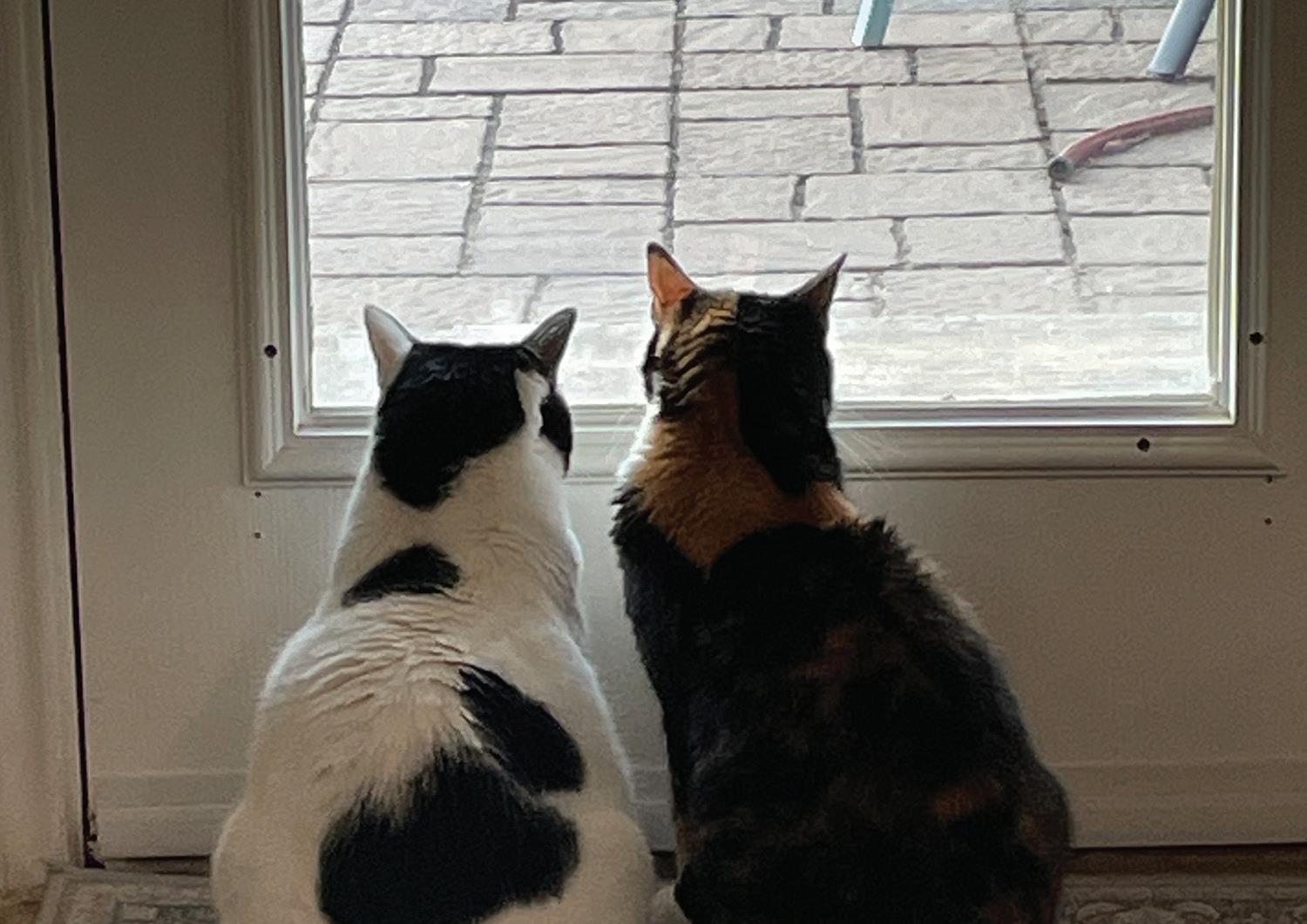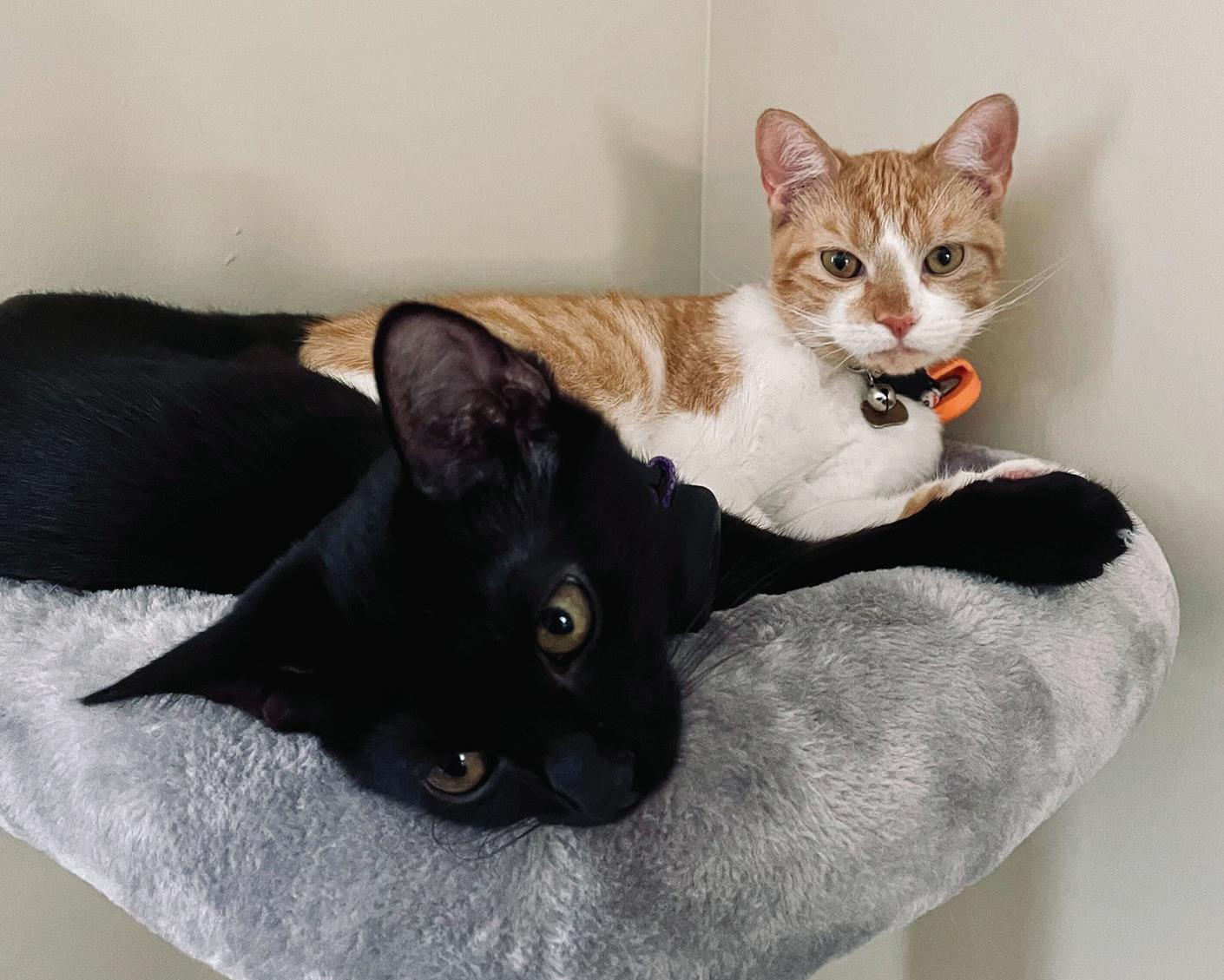




By Hope Jimenez News Contributor
The City Hall Steering Committee’s proposal to relocate the dog park and skate park and construct a new city hall on the parks’ current site is drawing concern from San Marcos residents.
The City Hall Steering Committee has begun reviewing conceptual options for a new city hall and a recent proposal includes relocating the current dog park and skate park. The dog park currently resides on the north side of Hopkins Street, while the skate park resides on East Hopkins Street.
“The 23-member Advisory Committee, which includes community members and council representatives, has reviewed several conceptual options for a new City Hall. Some include relocating the dog park and skate park, and some do not. No decisions have been made,” the city of San Marcos wrote in a Facebook post on March 26.
Executive Director of the San Marcos River Foundation and City Hall Steering Committee Member Virginia Parker said the committee is still determining which side of Hopkins Street the new city hall facility will be located. TUESDAY
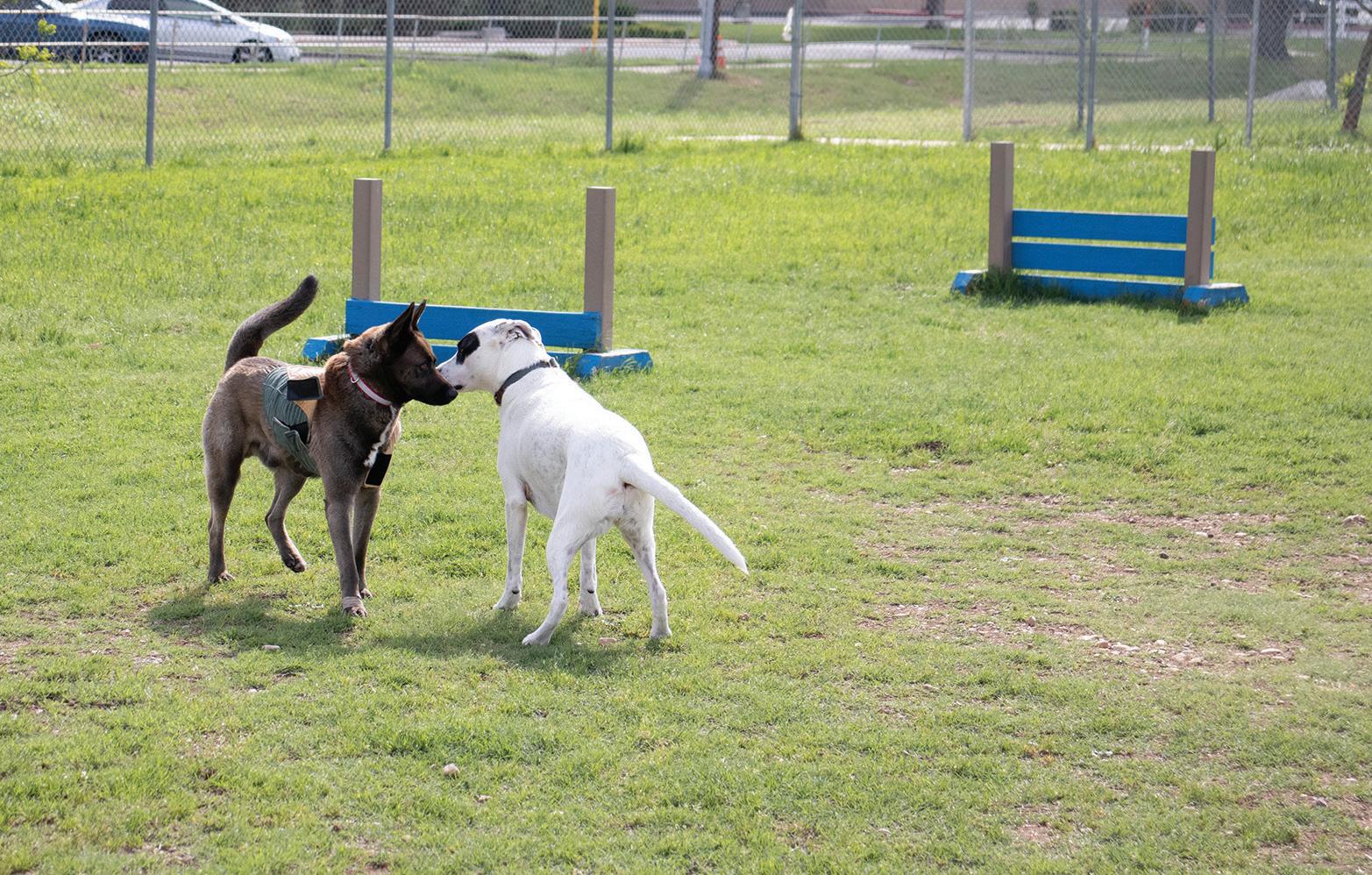
By Arabella Dichristina News Contributor
A multistate lawsuit spearheaded by Texas could upend parts of federal disability law, but for now, Texas State officials say support for students with service and emotional support animals (ESAs) will continue as usual.
The case, Texas v. Becerra, was filed in the U.S. District Court for the Northern District of Texas in September 2024. In it, Texas and 16 other states argue that a new federal rule expanding Section 504 of the Rehabilitation Act to include gender dysphoria as a protected disability is unconstitutional.
Section 504 of the Rehabilitation Act prohibits discrimination on the basis of disability by programs receiving federal financial assistance. Though lawmakers say the lawsuit targets new definitions, all of Section 504 is at risk as the suit states: “Because Section 504 is coercive, untethered to the federal interest in disability and unfairly retroactive, the Rehabilitation Act is not constitutional under the spending clause.”
At Texas State, Director of the Office of Disability Services (ODS) Gavin Steiger said that regardless of the lawsuit’s outcome, support for assistance animals will remain grounded in other laws like the Americans with Disabilities Act (ADA) and the Fair Housing Act (FHA).
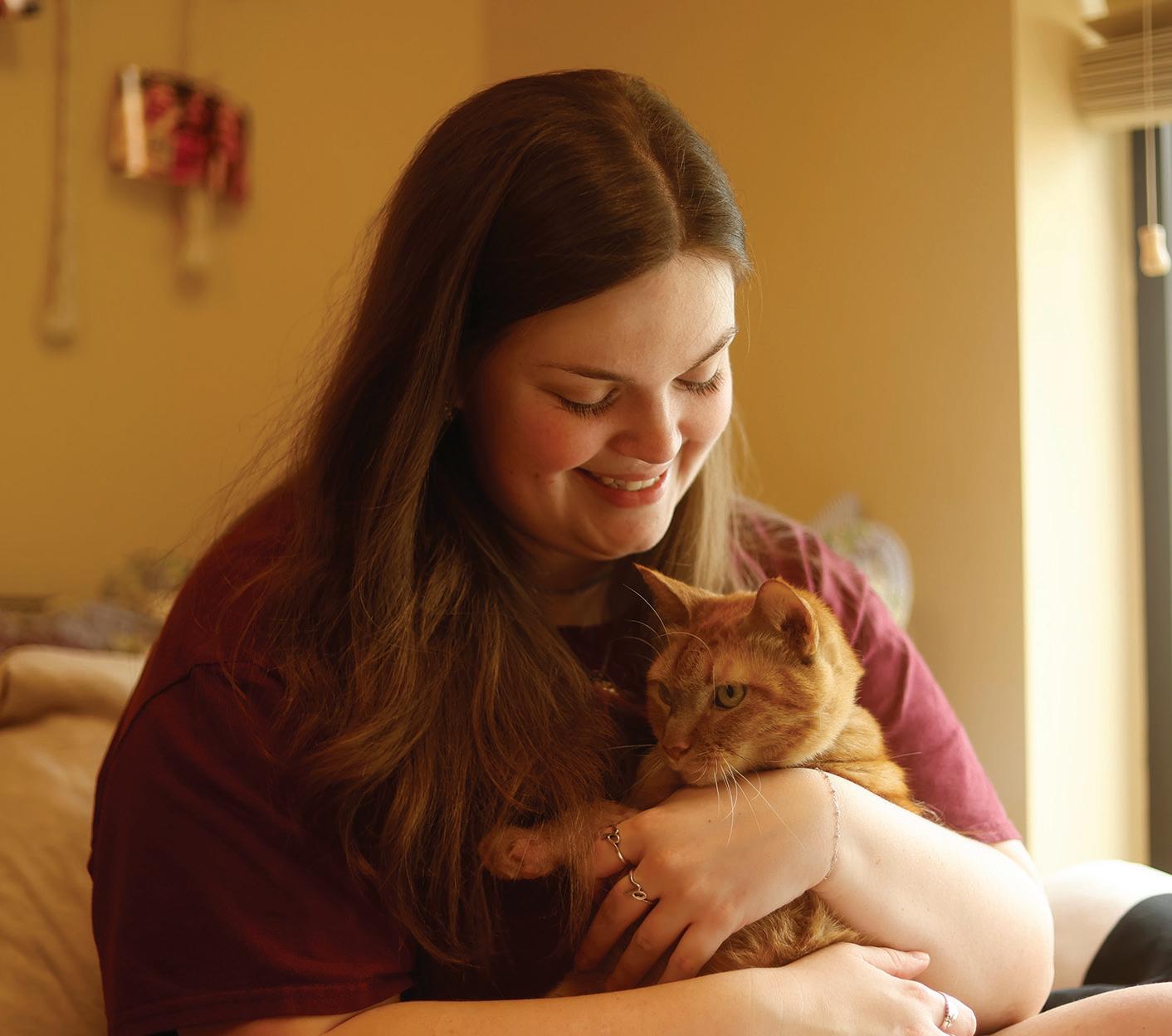
ESA through ODS.
By James Phillips Life and Arts Contributor
Bird conservationists and animal welfare advocates are divided on how to manage Central Texas’ stray and feral cat populations. Cats are responsible for an estimated 2.4 billion bird deaths annually, according to the American Bird Conservancy (ABC). Experts like Britt Coleman, president of the Bexar Audubon Society, advocate for stricter measures, including euthanasia, to control community cat populations. However, many cat welfare advocates argue strongly for the protection of these cats within local communities.
By Sydney Seidel Life and Arts Contributor
This year, the Dog’s Day Out (DDO) program is launching new initiatives and expanding its mission to get more dogs out of the shelter while strengthening connections with the community.
Run by the San Marcos Regional Animal Shelter, DDO was created after staff noticed that many people, especially students, wanted to help but weren’t in a position to adopt or foster. To meet that need, the shelter launched the program as a way for community members to take dogs out for short-term outings.
The shelter is expanding the program’s accessibility and flexibility, introducing new options that make it easier for individuals and student groups to get involved.
Dogs are now available for outings more frequently, with new hours on Mondays, Wednesdays, Fridays and Saturdays from 8:30 a.m. to noon to increase accessibility. When it was started there were only three days volunteers could choose from.
Minnie Buckhaults, community engagement coordinator, said the program’s personalized approach ensures dogs get the best environment for their needs, helping potential adopters see them in their most comfortable state.
“There have been instances where dogs are spinning in their kennels, and the second they get in the car for their DDO, they immediately fall into a restful sleep,” Buckhaults said. “When they return, adopters see them relaxed and it makes a world of difference.”

Tuesday, April 8, 2025
By Jacquelyn Burrer News Reporter
At its April 15 meeting, the San Marcos City Council will hold a public hearing on a proposed seven-story student housing apartment complex across from the downtown H-E-B after the San Marcos Planning and Zoning Commission voted to deny the project on March 25.
On March 25, the commission denied two conditional use permits (CUPs) requested by the developer: one to increase the building’s height from five to seven stories and another to allow for purpose-built student housing, which is housing designed specifically to meet students’ needs.
That vote means both permits now require a supermajority, six out of seven council votes, for approval.
Under the city’s current development code, the developer is allowed to build a five-story multifamily housing complex but is seeking the CUPs to construct a student housing complex.
The project site is currently zoned CD-5D (Character District-5 Downtown), which allows up to five stories without a CUP.
Shannon Mattingly, a director of land use and entitlements at the Drenner Group, a real estate law firm that concentrates on land-use projects, is working with the project’s development
group, Next Chapter Properties (NCP), to move forward with the development.
Previously, Mattingly served as the director of planning and development services for San Marcos until September 2022.
Mattingly also worked on the McLain Project apartments in 2024, which were the first downtown student housing apartments approved after the development code was updated in 2023, despite planning and zoning voting unanimously to deny the McLain project’s CUP applications.
In a letter to Planning Director Amanda Hernandez, Mattingly cited a recent parking study completed by Capitol Market Research to provide parking recommendations for the proposed complex.
Mattingly also used a study from Capitol Market Research, conducted in July 2023, to support the McLain project in 2024, where the study was represented as showing a citywide need for more student housing, despite only examining 10 downtown apartment complexes.
Additionally, Mattingly said at the March 25 meeting the developers requested another parking study but did not provide a timeline for its completion.
In the letter to Hernandez, Mattingly referenced a Texas State University housing demand study that
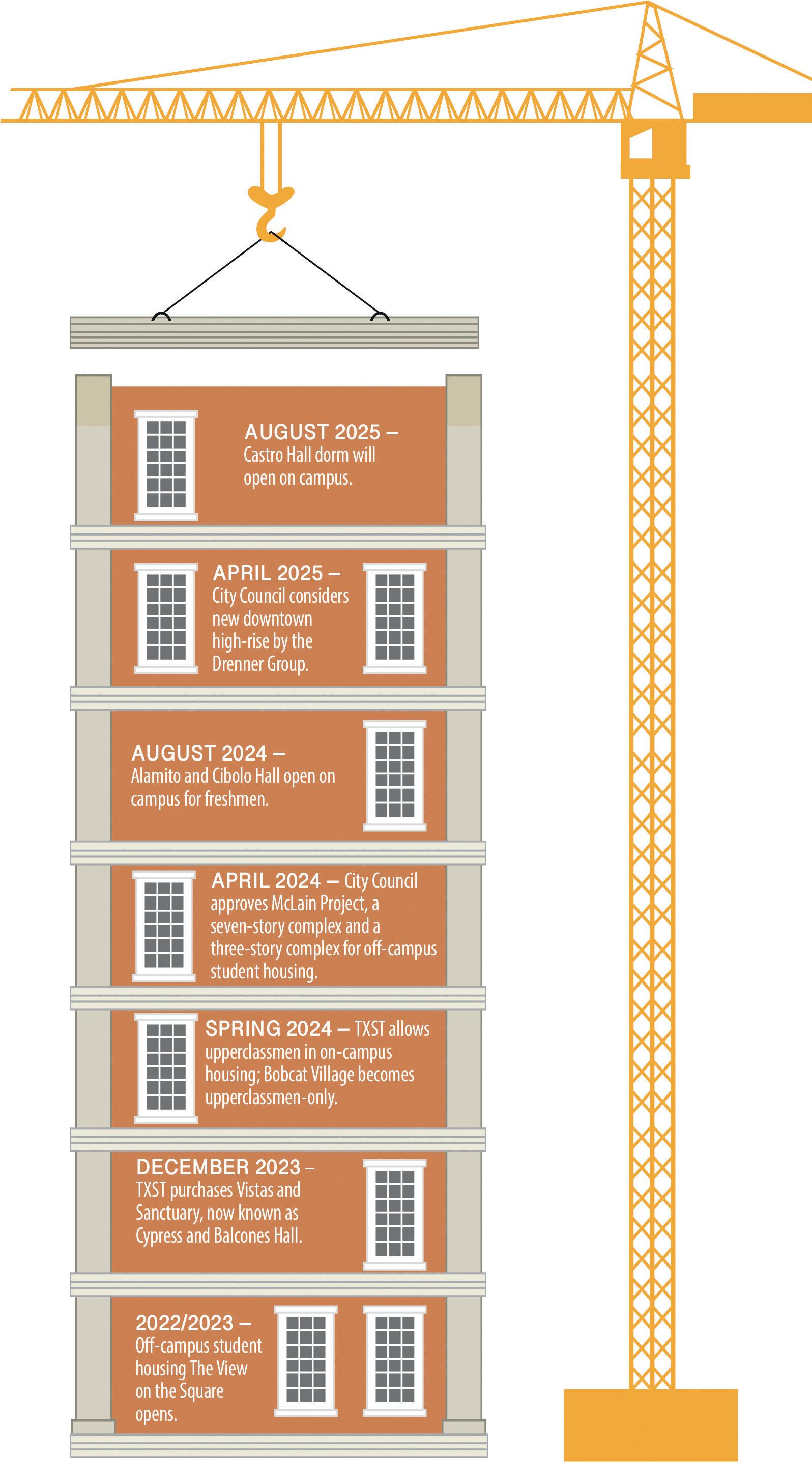

Trinity Building 203 Pleasant St. San Marcos, TX 78666 (512) 245 - 3487
History: The University Star is the student newspaper of Texas State University and is published every Tuesday of the spring and fall and once a month in the summer semesters. It is distributed on campus and throughout San Marcos at 8 a.m. on publication days with a distribution of 3,000. Printing is by the New Braunfels Herald-Zeitung.
Read more at universitystar.com
Editorial Staff
Editor-in-Chief: Marisa Nuñez stareditor@txstate.edu
Managing Editor: Blake Leschber starmanagingeditor@txstate.edu
News Editor: Lucciana Choueiry starnews@txstate.edu
Life & Arts Editor: Carlene Ottah starlifeandarts@txstate.edu
Opinions Editor: Rhian Davis staropinion@txstate.edu
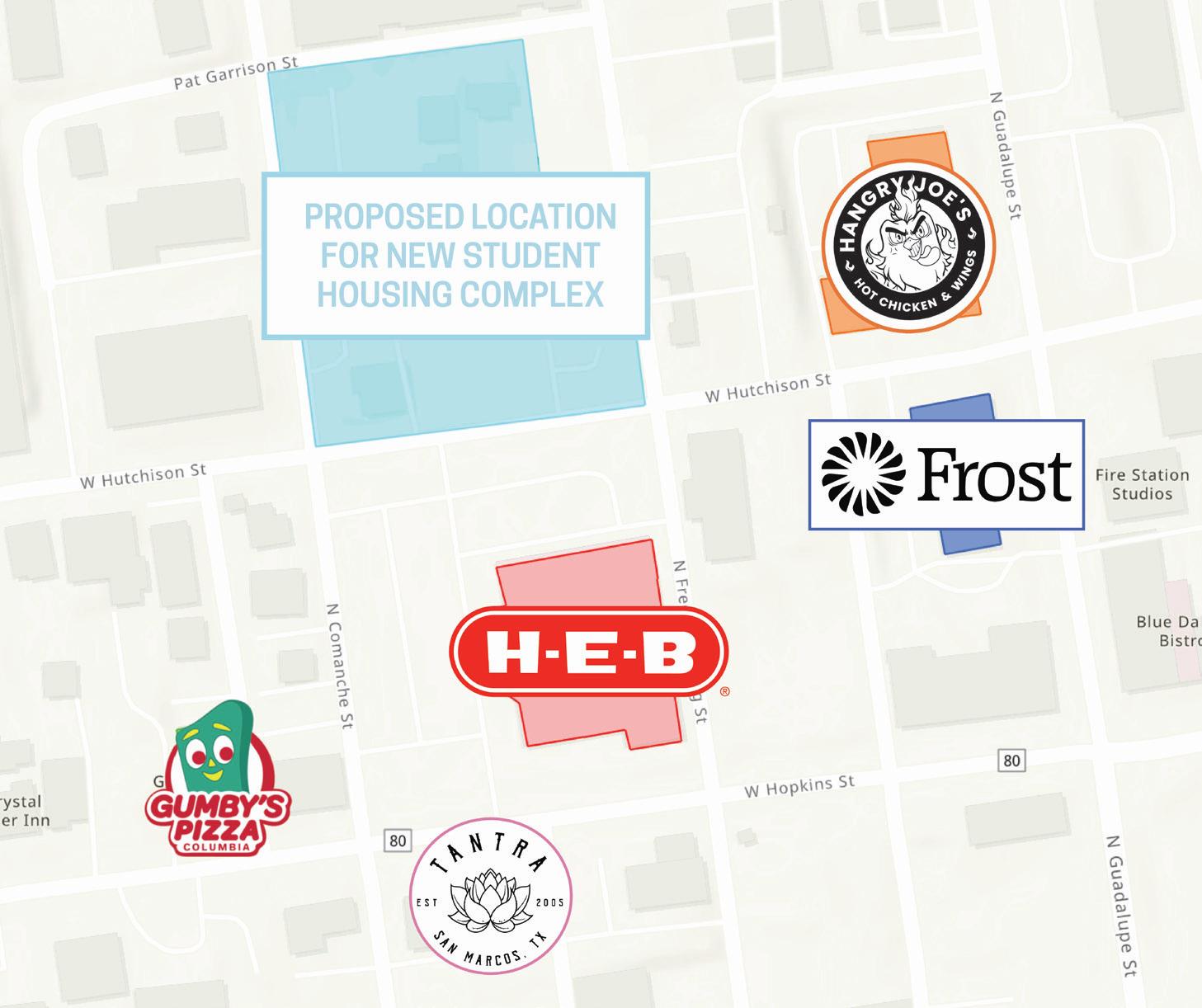
allegedly found the city was short 10,000 to 12,000 off-campus beds. Mattingly said NCP met with university officials who confirmed ongoing struggles to house freshmen on campus.
However, the study’s details, such as the date or methodology, were not included in the public packet.
“We’ve been involved in this business for a very long time, and we’re very proud of our reputation,”
NCP Chief Financial Officer Patrick Quinn said at the March 25 meeting. “Our leasing practices are stellar in our world, and I’m sorry y’all have had some bad experiences with it, but that’s not what you can expect from us.”
The current development code requires only one parking space per unit, roughly 0.40-0.45 spaces per bedroom, whereas the CUP would require 1.05 spaces per bedroom. Mattingly said at the meeting that the additional building height is needed not to add more units, but to accommodate a multi-level parking garage beneath the apartments that would meet the higher parking requirements.
“They need that additional parking because parents want their kids to be able to park on-site,“ Mattingly said. “To get the amount of parking that they need to accommodate the student housing project, they would need to be able to get a little higher.”
Planning and Zoning Commissioner Amy Meeks voiced concern at the March 25 meeting over the shift in the developer’s plans to shift to purpose-built student housing, noting that when First United Methodist Church sold the property to NCP, they were told no CUPs would be requested.
“It was said numerous times that the developers were not going to ask for any CUPs,” Meeks said. “They were only going to build exactly what they could… the fact that it has changed concerns me a great deal.”
According to the meeting packet, planning staff recommended denial for the first CUP and remained neutral on the second CUP, citing the project’s conflict with the city’s adopted Downtown Area Plan.
“What you’re saying to us tonight is ‘Oh that will help bring down the cost,’ then everybody in that unit has to pay less,” Meeks said. “That doesn’t fly. We know what that means is the developer is getting more money. The
Sports Editor: Jackson Kruse starsports@txstate.edu
Multimedia Editor: Mandalyn Lewallen starmultimedia@txstate.edu
Engagement Editor: Diego Medel starengagement@txstate.edu
PIR Director: Katherine Andrews starpr@txstate.edu
Creative Service Director: Carson Rodgers starcreative@txstate.edu

Design Editor: Jen Nguyen stardesign@txstate.edu
Director: Laura Krantz, laurakrantz@txstate.edu
students are not paying less, it’s more money for the developer, so I’m very concerned that is your explanation.”
City staff added that if the developer agreed to several conditions, the CUPs could be considered. Among the proposed conditions were: Publicly posting leases that guarantee either alternate housing or a full refund if units aren’t ready on time, offering both individual leases and full-unit leases and prohibiting sale to a tax-exempt entity, like Texas State, for seven years to prevent the university from purchasing the apartments.
Katherine McCrocklin-Bowers, president of the Alpha Delta Pi Housing Corporation and a nearby resident, submitted a letter opposing the CUPs, arguing the project would exacerbate an already congested area.
“The proposed changes prioritize financial gain over responsible development and the long-term wellbeing of current property owners,” McCrocklin-Bowers wrote.
Nikkye Vargas, San Marcos resident and Daughter of the Wild owner, said at the March 25 meeting she does not see how adding another student housing development will help support the downtown community, particularly because previous apartment complexes have ended up being sold to Texas State University.
“There’s people here who helped write those plans who are now on the developer’s side asking for changes on it,” Vargas said. “As a downtown business owner…you’re continuously putting us into gridlocks for grocery runs, for the people that live here, for the people that work here. I think it’s inequitable, and it deserves to be questioned a little more than it is.”
San Marcos City Council will take up the two proposed CUP requests during its April 15 meeting. If either vote fails to reach a 6–1 supermajority, the project as proposed cannot proceed.
Scan the QR code to read the March 25 planning and zoning agenda.

Publication Info
Copyright: Copyright Tuesday, April 8, 2025. All copy, photographs and graphics appearing in The University Star are the exclusive property of The University Star and may not be reproduced without the expressed written consent of the editor-in-chief.
Corrections Policy: Errors appearing in the pages of The University Star and brought to our attention will be corrected as soon as possible.
Advertising Inquiries Contact at: 512-245-3487 advertising@universitystar.com
By Lesdy Hernandez News Reporter
The National Institutes of Health (NIH) terminated the Texas State U-RISE program and the Texas Doctoral Bridge program following funding cuts.
The NIH, which is funded by the U.S. Department of Health and Human Services, is the nation’s primary federal agency for biomedical and public health research.
On Feb. 7, the NIH announced changes to its grant policies, significantly reducing funding toward research institutions and universities.
“For all existing grants to [Institutions of Higher Education]retroactive to the date of issuance of this Supplemental Guidance, award recipients are subject to a 15% indirect cost rate,” the NIH stated in the Feb. 7 statement. “This rate will allow grant recipients a reasonable and realistic recovery of indirect costs while helping NIH ensure that grant funds are, to the maximum extent possible, spent on furthering its mission.”
The policy changes followed restrictions imposed by the Trump administration on the NIH, which included a halt on considering new grant applications, the cancellation of grant review meetings and the suspension of communication between programs.
TXST U-RISE, an
NIH-funded parent training grant program, supports research training for graduate students and prepares undergraduate students interested in becoming biomedical researchers.
Karen Lewis, project director of the Texas State U-RISE program, said the initiative equips students with biomedical research training.
“The idea behind the U-RISE program is that we want to help students prepare for PhD programs,” Lewis said.
On March 27, Lewis received an email from the NIH instructing that all U-RISE project activities must stop by March 31 and that budgets must be finalized by April 4.
The notice was sent instead of the expected Notice of Award for the program’s fifth-year grant cycle. The day after the award notification had been anticipated, U-RISE scholars and research mentors were informed that the program was being terminated.
Under the U-RISE program, students are supported in facilitating their research in labs through 60% of tuition and fees remission and monthly living costs provided.
According to Lewis, students receive about $12,000 a year to help with living costs and reduce the financial pressures students may experience.
“These training programs
exist to recognize and defray that cost so that people can develop their scientific skills to really build this pipeline of the next generation of biomedical researchers in the country,” Lewis said.
Since the initial NIH freeze, Lewis said there has been no communication between U-RISE and the program officers at NIH.
“We’ve spent four years building this program and when the U-RISE program started it was a slow burn because we launched in the shadow of the pandemic,” Lewis said. “Within the last year, we’ve gotten traction in the Texas STEM community and students know about the program now; they’re applying in the dozens.”
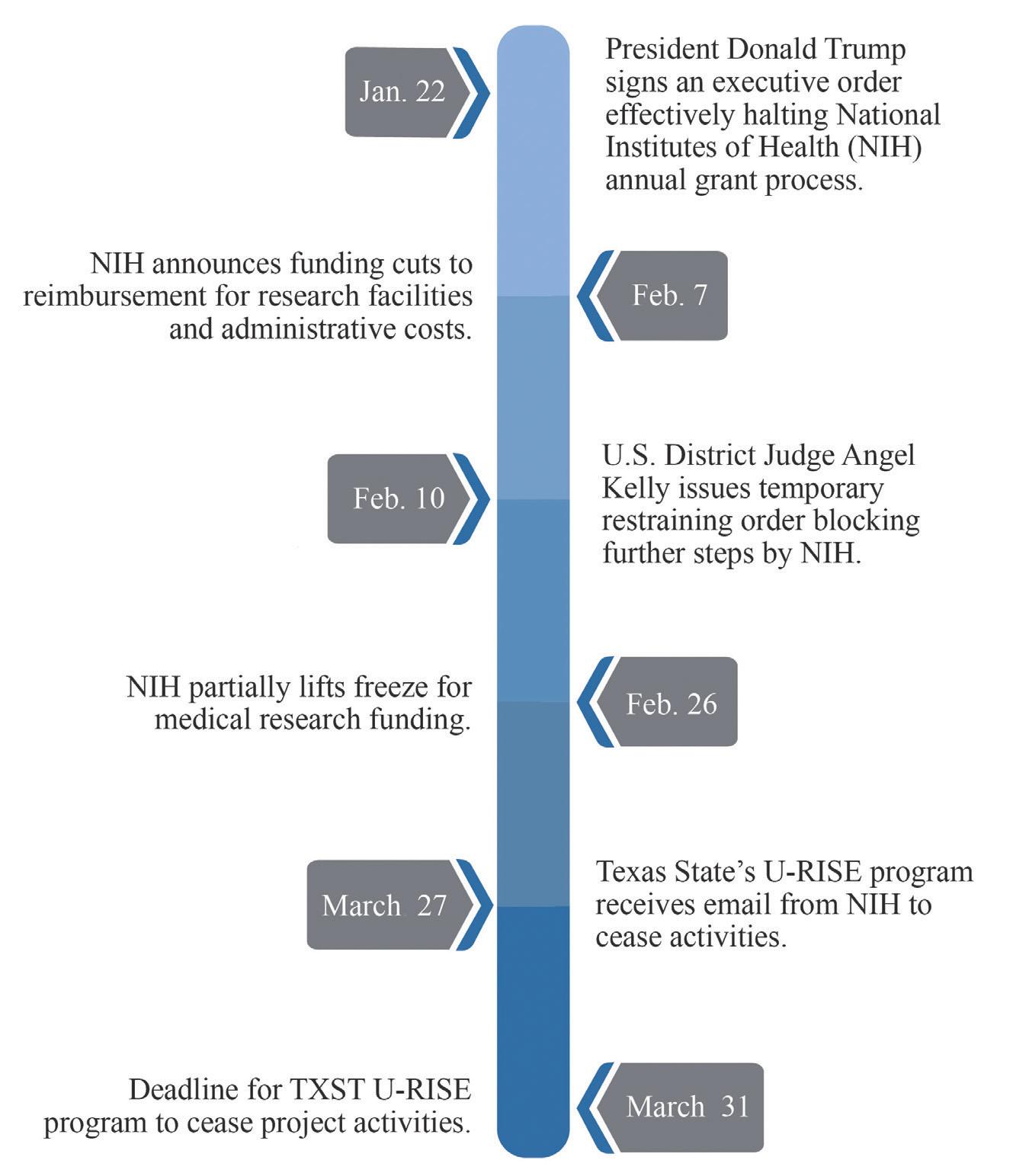
Efforts to support U-RISE scholars during this transition are underway. The TXST Division of Research has committed to covering the April and May stipends, ensuring scholars continue to receive their funding. Additionally, reimbursements for the program’s travel events in November 2025 are currently being processed.
However, the program’s official weekly development seminars and workshops have been postponed.
“While NIH funding for the [U-RISE] program ended as of April 1, Texas State... will continue mentoring those
currently enrolled through the end of the semester and are monitoring developments related to future NIH funding,” Texas State wrote in a statement to The Star.
On April 2, the Texas Doctoral Bridge Program also received an email from the NIH announcing the program’s termination. However, funds from active awards could continue to be drawn per the NIH Grants Policy Statement.
In partnership with UT Health San Antonio, the 12-year-long program helped provide master’s level students
with academic preparation to transition into researchintensive PhD programs in biomedical fields.
The program usually provides an annual stipend of $30,000-45,000 covering tuition and fees for students.
Lewis said the cuts will hit both the students who need the support the most and Texas State as a whole.
“This is going to interfere with the next five years of [U-RISE Scholars] life as they decide what to do and how to do it post-graduation,” Lewis said.

By Blake Leschber Managing Editor
Hays County residents are divided after commissioners court voted to terminate the county’s contract with Austin Pets Alive! (APA!) pet resource center and build a new physical shelter on March 25.
The contract allowed APA! to partner with the county to run the Hays County Pet Resource, Education and Research Center (PRC). According to Hays County, the PRC is a virtual center that “connects pet owners with local services and resources to keep families together and out of the animal shelter system.”
The contract did not require APA! to have a physical location, but Hays County Commissioners court approved the item to work with Broaddus & Associates, Inc. to build a new shelter in the county.
Commissioner of Precinct 4 Walt Smith introduced the item and commissioners approved the item 4-1 at the March 25 meeting, with Hays County Judge Ruben Becerra as the only dissenting vote.
“This should never have been an either-or decision - collaboration was the key to success,” Becerra wrote in a press release . “Instead, a valuable partnership was cut short, leaving our community without critical resources.”
Some attendees of the meeting believe the contract should not be terminated. Kendra Lugo, pet reunification coordinator for the PRC, said Hays County should keep the contract because of the positive impact APA! had in the county.
“[On March 23], we served 292 families and 619 pets at our food
distribution event showcasing the need of people in the community who otherwise cannot access this type of help for their pets,” Lugo said. “... We meet people where they are, offer support, reassurance and compassion.”
Additionally, some people like Maggie Lynch, APA! research and development senior director, are concerned with the partnership with Broaddus & Associates, Inc. in building the new shelter. She said it is best for a company like APA! to run and plan the physical location.
“We must question how a construction project management firm can be expected to design and implement an effective animal welfare system; an area outside their core competencies,” Lynch said.
According to its website, Broaddus and Associates, Inc. “possesses expertise in higher education, civil and institutional projects and offers a range of comprehensive planning services from detailed facility space programs to comprehensive site master plans.”
Some community members are for the termination of the contract, stating they want to keep the coordinators of the PRC local.
“I understand the need and desire of maybe having the rightsized facility built because of programming, but I think that those efforts can be accomplished by working with our municipalities and local organizations,” Debbie Gonzales Ingalsbe, Hays County commissioner Precinct 1, said. “I’ve had many people reach out to me also — municipalities, especially the city of Kyle — and they’re extremely interested in partnering with us. I think that is a direction that we really need to look

at seriously.”
The city of Kyle is working on potentially building a shelter by 2026, which prompted Kelly Arthur, founder of Lost & Found Pets of Hays County, to believe that there is no need for the PRC.
“We don’t need three shelters,” Arthur said. “This is more about doing something at the front end, like low-cost options, so that people aren’t surrendering their animals.”
One avenue some want the county to take is to partner with Prevent a Litter (PALS) of Central Texas. PALS is a non-profit organization that works to end pet overpopulation and pet homelessness. Lauren Foye, president of PALS, said they know the best ways to combat issues surrounding pets in Hays County.
“We do know the best practices with programs and we are doing them extremely well with very little
By Ryan Claycamp Assistant News Editor
Some Hays County law enforcement agencies are unable to account for missing evidence in some criminal cases, causing complications for investigations.
According to a January pretrial court hearing for DeVonte Amerson, a man charged with capital murder in connection with the 2015 death of Texas State Student Justin Gage, the San Marcos Police Department (SMPD) mishandled evidence dating back to at least 2018.
During Amerson’s hearing, the defense and prosecution agreed that some evidence was lost in 2018 due to a system upgrade by SMPD. The evidence lost was enough for 22nd Judicial District Judge Bruce Boyer to say he would issue a spoliation instruction, which is an instruction to the jury telling them some evidence was mishandled.
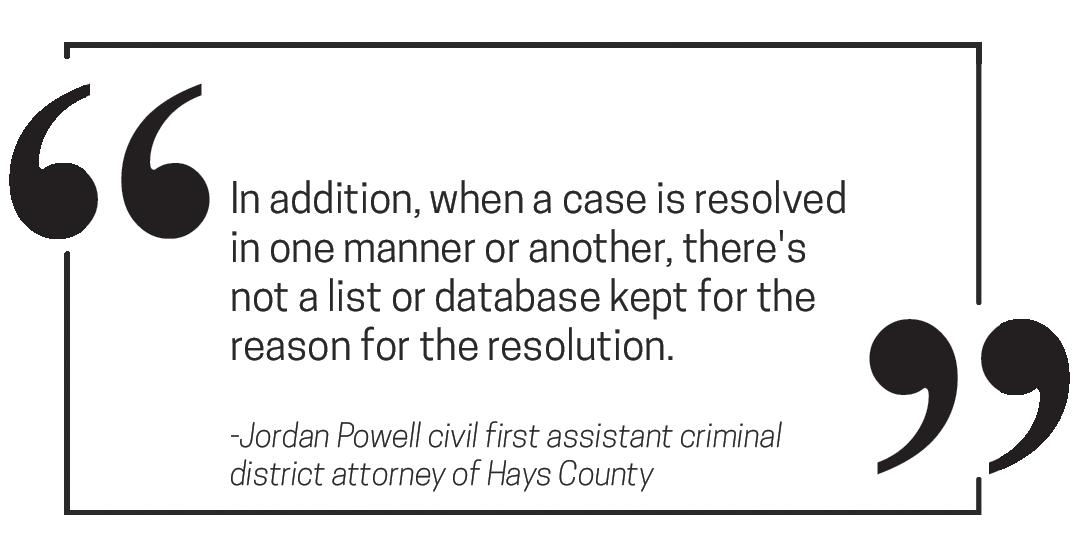
“They lost a lot of evidence,” David Sergi, Amerson’s attorney, said in a press conference after the hearing. “The judge did grant, and the good news is that when we do go to trial, he granted a spoliation instruction.”
Contrary to the spoliation instruction and the rest of the court hearing, a public information request (PIR) filed by The Star to the San Marcos Police Department did not return any records related to the 2018 computer upgrades or evidence lost during the upgrades.
According to the city of San Marcos, there were “no records responsive to the request,” which asked for information about the computer upgrades, any communications related to the upgrades and any evidence lost or damaged in the upgrades.
A separate PIR The Star filed to SMPD for any cases they were involved in where spoliation instructions were issued also returned no results.
“The San Marcos Police Department does not maintain the public records you are requesting. Any information related to judicial findings or jury instructions related to
misconduct might be maintained with the Hays County District or County Clerk’s offices,” SMPD records custodian Gavin Alley wrote in response to the request.
After Alley’s response, The Star filed a PIR to both the Hays County Criminal District Attorney’s office and the Hays County Clerk’s office. The requests sought records related to evidence mishandling, including spoliation instructions issued, cases dismissed due to evidence mishandling and disciplinary records related to the mishandling of evidence.
The Hays County District Attorney’s office said they do not track that data.
“The Hays County Criminal District Attorney’s Office does not have a repository for the sorts of information/statistics for which you’re seeking related to lost, destroyed, mishandled evidence,” Jordan Powell, civil first assistant criminal district attorney of Hays County, wrote in response to the request. “In addition, when a case is resolved in one manner or another, there’s not a list or database kept for the reason for the resolution.”
According to Powell, to get that information, the DA’s office would have to look through every criminal case covered in the request. According to an invoice for the request, the DA’s office would have to manually sort through 51,500 cases.
“One would have to pull and analyze each individual file to determine the reason for which they are on the list,” Powell wrote.
When asked why their office does not track information related to case outcomes, Hays County DA Kelly Higgins said it is due to technological limitations.
“Our office is currently saddled with case management software which doesn’t give us much help there,” Higgins wrote in an email. “Over the coming months, we will be rolling out a new system, Techshare, which promises to be very helpful.”
Techshare is a statewide collaboration that develops software to help Texas justice agencies better manage and share information.
It is unclear if the DA’s office will work to catalogue past cases in Techshare. It is also unclear if this will continue to impact cases such as Amerson’s.
funding,” Foye said. “...We are local and we know what we are doing and we are successful at it. I hope that you understand our programs are here working and they need to be funded.”
PALS recently moved to a larger location off Ranch Road 12, tripling their services like surgeries and teeth cleanings.
According to Becerra, the contract between APA! and Hays County will officially end on April 26.
“The locals have been, for a very long time, depleting their personal funds. We don’t need to reinvent the wheel here,” Arthur said. “...Watch us bring it all together and watch us make it work. It’s going to work; we just need the support.”
This is a developing story. The University Star will provide updates as they become available.
Mike Posner, ACRAZE, more to headline River Fest
By Lucciana Choueiry News Editor
Mike Posner, ACRAZE, Cameron Allbright, Cam Allen and Loud Luxury will anchor the music lineup at this year’s River Fest, according to an email from Texas State to The University Star
Loud Luxury, the fifth and final headliner, was the artist Texas State previously said would be announced by April 4.
The event will take place from 3 to 10 p.m. on April 10 at Sewell Park.
Student Involvement and Engagement hosts River Fest, which is open exclusively to currently enrolled students. New this year, attendees must purchase tickets in advance and bring their student ID for entry. There will also be a ticket limit of 6,000, and all tickets must be purchased online as none will be sold at the park’s entrance.
The change comes after last year’s River Fest, which featured rapper Tyga as the headliner and local band Flight by Nothing as the opener. The event drew thousands of students but ended with multiple medical incidents and an overcrowded venue where students knocked the fences over.
River Fest returned to Texas State in 2024 after an eight-year hiatus, marking the revival of a tradition that began in 2003 and had been replaced by Gaillardia Fest in 2017. Last year, River Fest was brought back to the community through a collaboration with SACA, Student Involvement and Engagement, Student Government, Housing and Residential Life and After Dark Entertainment.
This year’s lineup reflects a variety of sounds. Mike Posner is known for his breakout hit “Cooler Than Me” and the Grammy-nominated remix of “I Took a Pill in Ibiza.” ACRAZE, a rising name in electronic music, made waves with his remix of Sam Smith’s “Unholy” and recently kicked off a Las Vegas residency. The Canadian DJ duo Loud Luxury, known for their high-energy dance tracks and viral hit “Body,” blends house music with pop.
Also performing are country artist Cameron Allbright, a New Braunfels native known for his soulful sound rooted in Texas songwriting tradition, and Cam Allen, who mixes Nashville polish with small-town energy.
Students can purchase $5 tickets in advance of the festival and $8 tickets on the day of the festival through the Student Involvement and Engagement website.

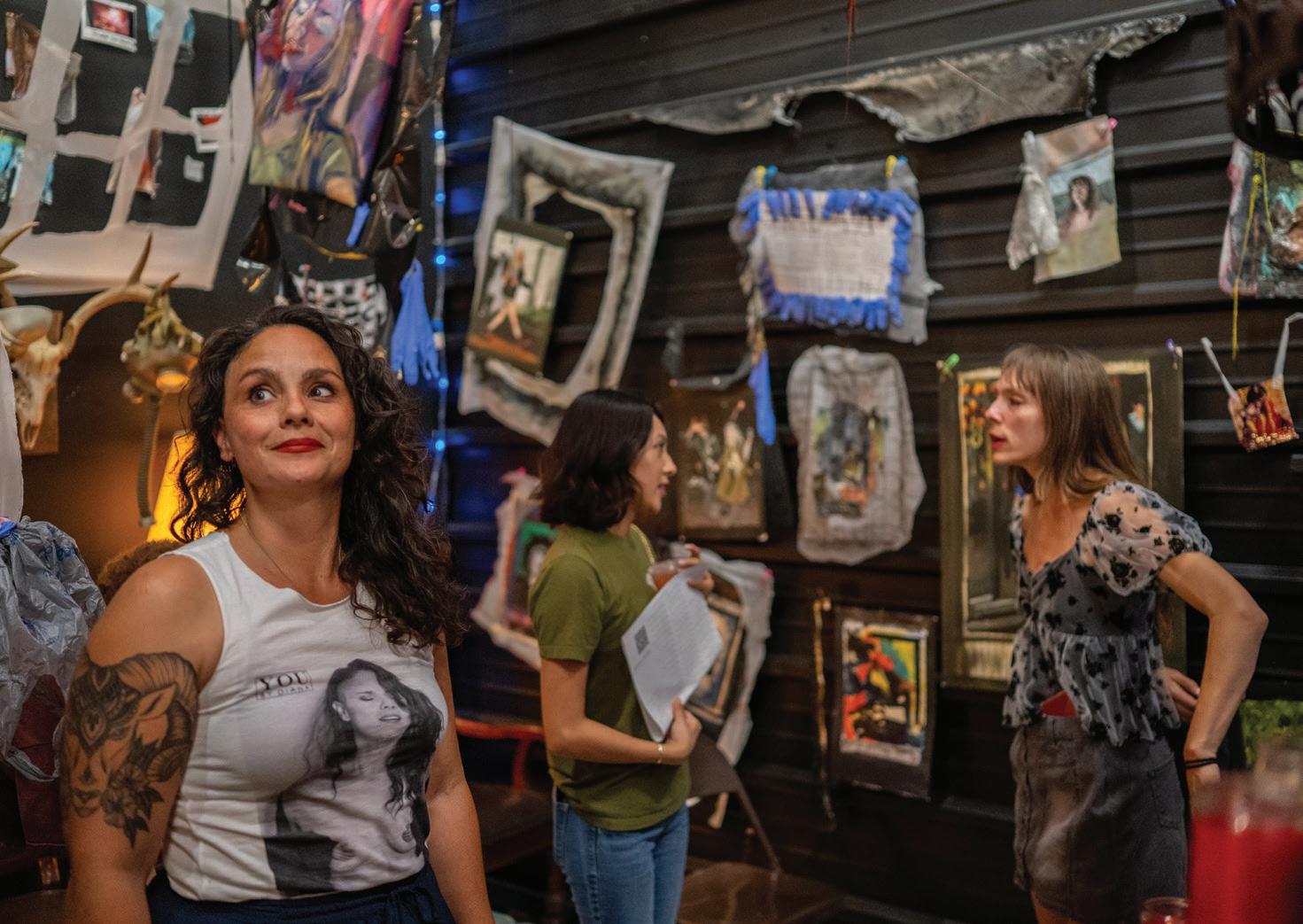
By Diego Medel Engagement Editor
A new beacon for artistic connection and community is in Central Texas.
The San Marcos Studio Tour kicked off its third year with 87 stops on April 4 at MotherShip Studios. The tour transforms studios, galleries and alternative spaces across the city for a two-weekend celebration of visual arts and creative exchanges.
For Nikki Hodgins, local artist who attended the kickoff party, San Marcos’ creative energy feels like something special.
“Everyone says it’s like what Austin used to be in the ’70s: really creative, really nice people,” Hodges said. “There’s always something going on down here.”
The tour began in 2023 as a way for MotherShip Studios, an art space located between San Marcos and Martindale, to open its doors to the public and build a community with local artists.
“One of the first ideas we had was some sort of group show and community event to introduce ourselves to the community,” Jacqueline Overby, co-founder and director of MotherShip Studios, said. “The concept of a studio tour made the most sense. It wasn’t just about us, it was about bringing in the whole community.”
This year marked a major shift for the tour, as the San Marcos Arts Commission awarded it funding for the first time as a part of its Arts and Culture grant program. The grant awards funds to
help artists and organizations host events and create art each year.
“The way in which they have worked with us to make sure that we were able to get funding for this tour shows that they care about the art scene and they want to see it exist,” Overby said.
Alicia Philley, project manager of the studio tour, said the recognition reinforces the value of arts and culture for the city.
“The commission understands that a growing city doesn’t just grow. It needs to have an organic base,” Philley said. “Arts and culture bring something to the city that is more valuable than just adding jobs.”
As growth in cities like Austin pushes artists outward, San Marcos is becoming a new hub for creatives seeking space and connection.
“Austin is getting prohibitively expensive. I think a lot of people are looking to not exist in a giant city anymore,” Overby said. “People want that same type of connection to art and culture that they had in Austin, but they want it here.”
The tour fosters that connection through its open application process, welcoming artists at any stage in their career. Overby said inclusivity is baked into the tour’s foundation.
“There is no sort of restriction or selection process. That is a big part of our concept — this is not a curated tour,” Overby said. “This is an inclusive community tour. We’re establishing a directory in a way, and everyone needs to be a part of the directory.”
Jessamyn Plotts, assistant professor of art and design and exhibiting artist, coordinates student involvement both on and off campus for the tour. She sees the event as a meaningful opportunity for students to connect and grow.
“This gives students the chance to share work on their own terms. It’s an extremely valuable resource,” Plotts said. “It connects them to a community. It gives them resources. It allows them to meet people who can help them in their careers.”
Plotts said at its core, the tour is an invaluable networking experience for emerging artists.
“Everything I’ve been able to accomplish as an artist has come from either my actual work or the people I know — people I met in college directly connected me to opportunities,” Plotts said. “It’s a combination of your work and your relationships. And the tour, if you zoom out and strip everything else away, is a structure for creating connections.”
Overby envisions a future where artists are paid to participate and where San Marcos becomes a recognized destination for arts and culture.
“We’re thinking 20 years down the line,” Overby said. “We want to help solidify the arts community here in a way that is not gonna be overlooked when new big companies or industries come in.”
The tour will continue on April 12 with a special all-day artist activation at Kissing Alley as part of the San Marcos Downtown Association’s first annual San Marcos Art Fest.
By Cara Cervenka Life and Arts Reporter
Several adoptable dogs spent a music-filled evening on March 29 at Industry, experiencing the love the San Marcos community had for them through a student-organized fundraiser.
Four public relations seniors at Texas State turned their senior capstone project into a full-scale music festival and fundraiser. The fundraiser known as Woofstock 2025 benefited the San Marcos Regional Animal Shelter (SMRAS) as the event raised $700 through a GoFundMe campaign.
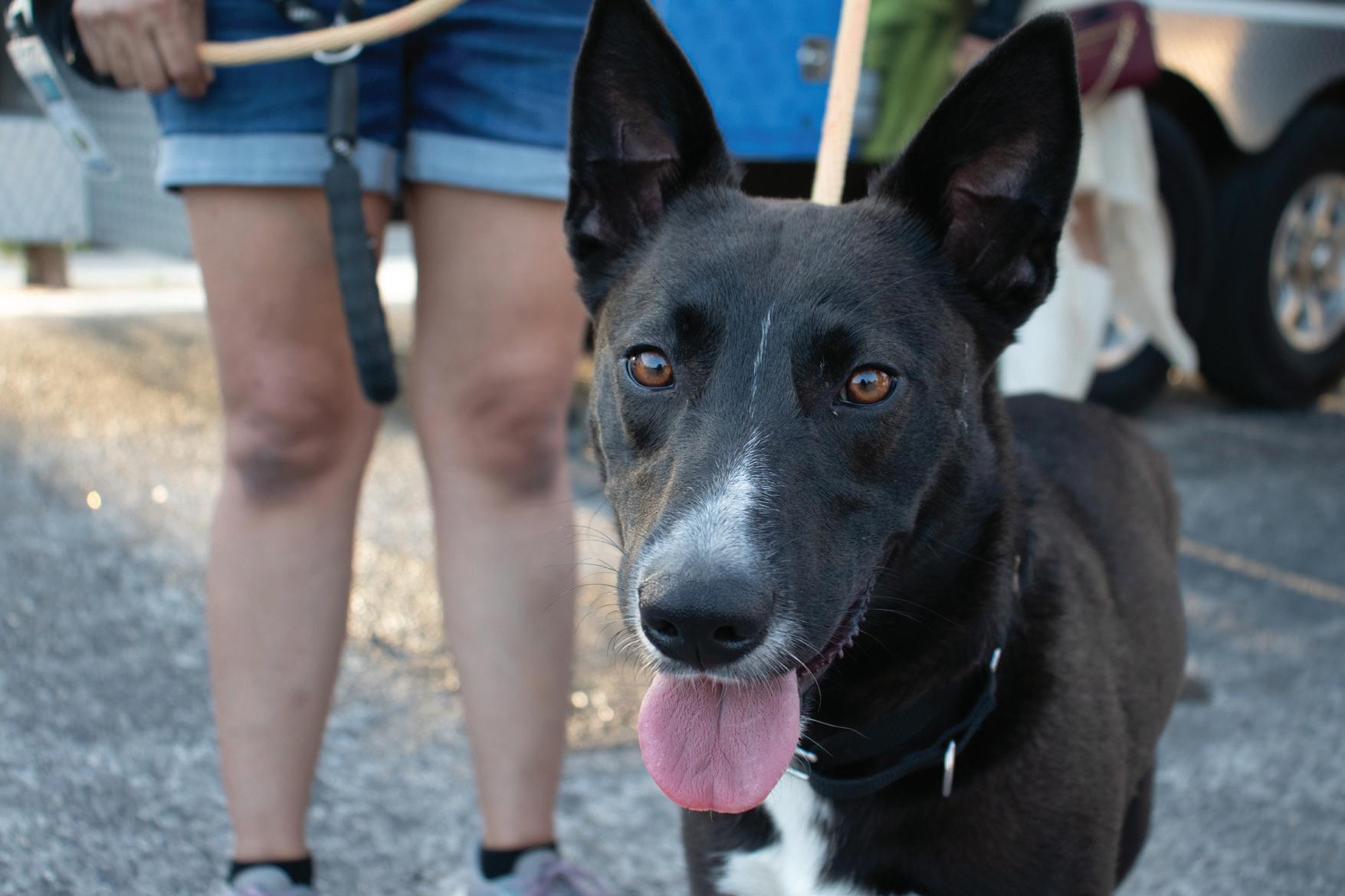
SMRAS brought several adoptable dogs to meet potential owners. While no animals were adopted that day, organizers said the awareness and donations were just as valuable.
Amadri Lisa Perez, Fallon Alexander, Avery Varela and Kylie Moore, public relations seniors, enrolled in a senior
capstone course. They partnered with the shelter to raise awareness and funds for animals in SMRAS. The students said they hope Woofstock becomes an annual event.
“I would come back every year to do it because it reset something in me,” Alexander said. “It made me feel good, and it feels good to know that you made a difference
because I’m such an animal lover.”
SMRAS is the only open-intake shelter in the county, accepting all animals regardless of condition or circumstance. As a result, it often struggles with overcrowding and underfunding.
“[The shelter] was literally one of the most devastating things I’ve ever seen,”
Moore said. “The volunteers and the people that work there, their ability to keep a smile on their face is so commendable.”
The group aimed to make the event accessible to the entire San Marcos community, not just the university. To spread the word, they organized two micro events, partnered with local radio station KZSM, distributed fliers at elementary schools and shared information on social media.
“We really wanted the event to encompass the community as a whole, and not just the university center of San Marcos,” Varela said. Despite having no initial budget, the students worked on the project throughout the semester. They said the experience was both challenging and rewarding.
“It was so rewarding and also just fun getting to pursue our skill sets and work with people who are just as passionate and hardworking as us,” Alexander said.
Tuesday, April 8, 2025
Opinions in The University Star are not necessarily those of our entire publication, Texas State University’s administration, Board of Regents, School of Journalism and Mass Communication or Student Publications Board.
By Hannah Nunez Opinions Contributor
Texas State students are no strangers to a good time, but usually, out-of-control ragers aren’t hosted by the university itself. Given the incidents at last year’s River Fest and the university’s failure to take accountability, Texas State is in no position to host the festival again.
Duane Bruce, executive director of Student Involvement and Engagement, said River Fest 2024 was “wildly successful.” But in case you missed it here’s a quick recap; despite on-site EMS and law enforcement, the event spiraled into chaos when attendees broke down perimeter barricades, leading to trampling and crowd surges that left attendees struggling to breathe.
Some may excuse the disorganization of River Fest 2024 as an unfortunate one-off. However, when a university-sanctioned event is understaffed, underprepared and poorly managed, it raises concerns about the university’s capacity to safely and effectively host large-scale events. Whether it’s a music festival, commencement event or a nationally televised presidential debate, the negligence of such foundational planning carries consequences.
Bruce said all large-scale university-hosted events warrant an emergency action plan (EAP) that outlines protocols for safety.
Yet this crucial safety plan was withheld from the student volunteers responsible for ticket admission
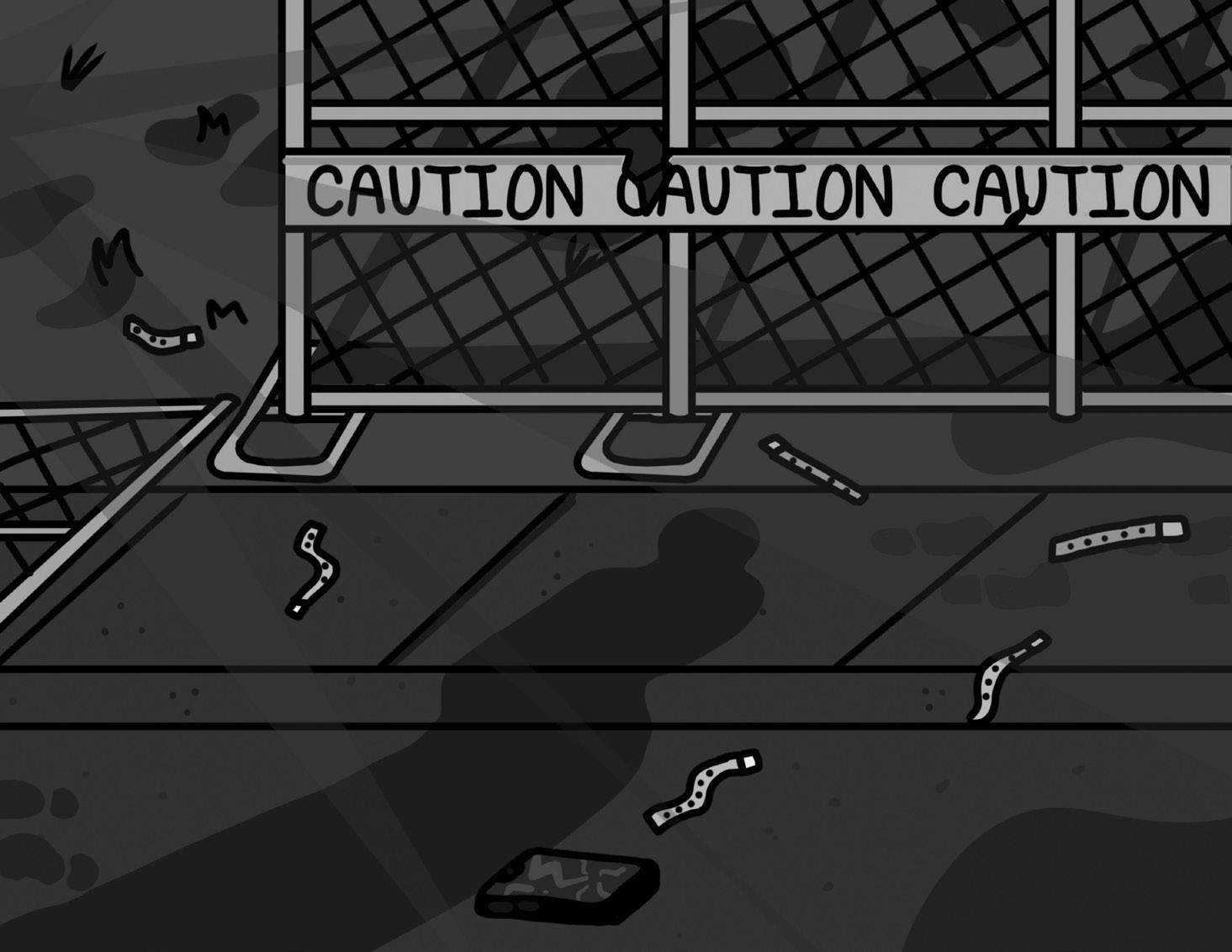
and line control at last year’s River Fest. These volunteers were then left unprepared and on the front lines of the chaos that unfolded. While Texas State proudly relies on students to organize and work these intricate events, its leadership fails to prepare them for the real possibility of a worstcase scenario.
“In the EAP, we designate protocols for safety and chains of communication,” Bruce said. “We don’t share the EAP with our student volunteers because they’re not the responders to emergency situations.”
This disorganization and lack of preparation directly affected the safety of staff and students, resulting in multiple injuries.
“I saw someone face plant into the concrete trying to hop a fence,” Zamar Soto, a music sophomore who witnessed the mayhem last year, said. “They got to the other side, but I don’t know if it was worth all that.”
This was just one of the many unreported incidents that unfolded throughout the event, highlighting how the festival’s lack of control escalated into a dangerous free-for-all.
And yet, nearly a year later, there’s still no confirmed number of how many people were hurt. Reports vary depending on the source.
Bruce said he did not know the number of staff working that night or the number of students injured.
The apparent indifference toward injured students calls into question the university’s responsibility and commitment to student safety.
It doesn’t help that River Fest has proven to be a financial burden on the university. Despite the risks, the event fails to generate the revenue necessary to justify its continued funding.
Rather than being a money-making event, it has only resulted in a financial loss for the university. Duane said the university does not profit or break even from River Fest. While the $5 ticket cost will be used to supplement the event, it’s not enough.
Funds that could be used to support other vital student organizations and campus programs are instead directed toward an event that poses serious safety concerns.
While last year’s incidents may not repeat themselves due to new safety features in place, the university’s disorganization and lackluster response raise serious concerns about its ability to host large-scale events while effectively prioritizing student safety as a whole.
It can be hard to trust an event where students have been injured in the past.
River Fest must ensure the safety of those who attend and align with values and priorities held by the student body. It’s time to rethink what this event is supposed to represent and whether it’s worth the cost.
-Hannah Nunez is a journalism senior
Guest columns are reviewed by the Opinions Editor and the Editor-in-Chief.
As members of the River Fest Student Planning Team, we’re excited to host River Fest 2025 on Thursday, April 10, from 3 p.m. to 10 p.m. at Sewell Park.
River Fest, is a celebration for currently enrolled TXST students, and serves as an opportunity for us to enjoy live music and come together as a community to ring in Spring. The planning committee worked hard this year to incorporate different genres, ensuring that all Bobcats have a chance to enjoy music that speaks to them. We are excited about this year’s lineup highlights Cameron Allbright, The Cam Allen Band, ACRAZE, Mike Posner and Loud Luxury.
River Fest has a long-standing history dating back to 2003 when the Student Association for Campus Activities (SACA) launched an event designed to bring students together for a day of relaxation, games, music and fun. After a brief hiatus, River Fest was reintroduced in 2024 bringing the tradition back to the Texas State community.
TXST is committed to making River Fest 2025 a safe and enjoyable experience for all attendees. The safety of our community is the highest priority,
and extensive measures have been taken to ensure a well-organized event. Increased security patrols will be in place throughout the festival, and entry will be carefully monitored at the University Events Center (UEC) main entrance. Capacity is limited to 6,000 attendees to maintain a comfortable atmosphere, so get your tickets early, the password is TXST! Be sure to arrive early, as entry will be restricted to those with a valid student ID and a purchased ticket.
TXST University Police Department (UPD), Public Safety Officers, Emergency Medical Service (EMS), event staff and two first aid stations will be on-site throughout the event. Water stations to fill up your empty water bottles will be located throughout the venue to make sure everyone stays hydrated.
We are committed to protecting and preserving the natural beauty of the San Marcos River, a vital part of both our campus and our community.
Remember “What Goes Here, Flows Here,” we have a collective duty to keep our river clean and free of debris. Students are volunteering to help with ensuring we keep the area clean before, during and after the concert. We ask all attendees to do their part by disposing of waste properly and respecting the requests made by volunteers.
See you at Sewell on April 10 for our celebration of student life, music and community.
-Olivia Alexander is the student body vice president and Sophia Reyes is SACA vice chair.

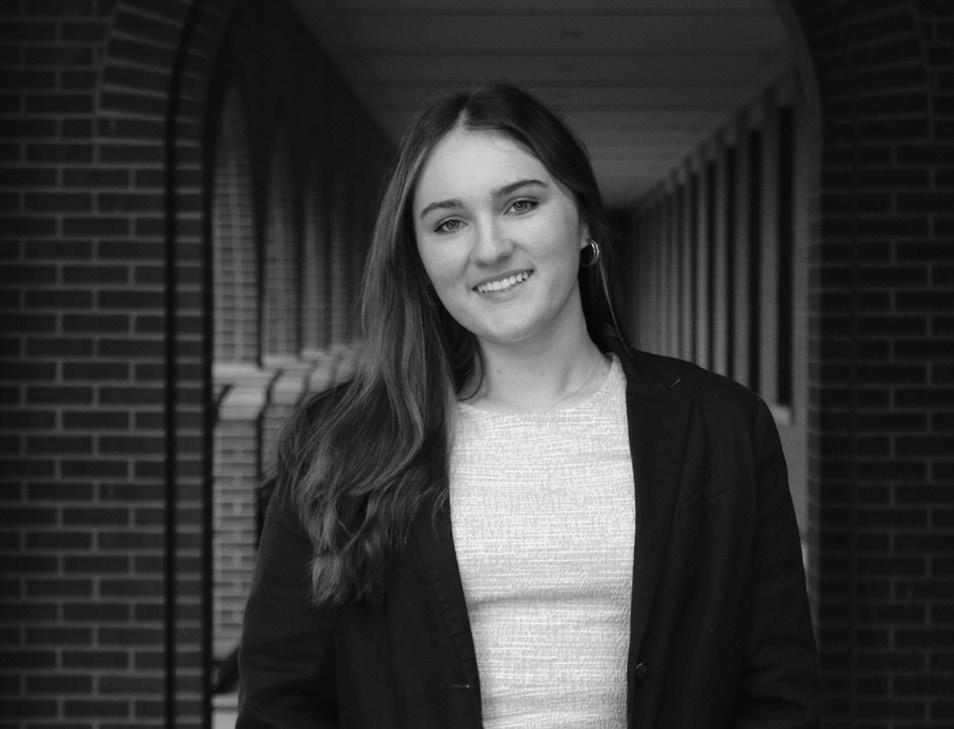
By Adrian Ramirez Senior Sports Reporter
Bobcat softball’s offensive identity relies closely on getting runners on, over and in. As a result, there are fewer games that showcase offense and more games that showcase pitching.
Luckily for Bobcat softball, it just may have the best duo of pitchers in the Sun Belt and one of the better duos in the country. Madison Azua, the Sun Belt Preseason Pitcher of the Year and her counterpart, Emma Strood, made their case to be considered for one of the most formidable duos in the circle through the first part of the 2025 season.
“I have been really pleased [with their performance],” Texas State pitching coach Josh Trevino said. “I have been really proud of the way [Maddy and Emma] have both been really resilient about taking feedback and then getting better. They’re really resilient kids with a bright future ahead of them.”
Before the season even began, Texas State head coach Ricci Woodard made it clear that this season would be different from last. Losing former pitcher Jessica Mullins meant there wasn’t going to be that workhorse on the staff this year, and pitching would
part of the reason Texas State is currently second in the Sun Belt with a 2.71 ERA.
When it comes to the two, it’s hard to deny they are as close in talent and production as two pitchers can be. Azua has appeared in 26 games to this point and boasts an ERA of 1.96, a batting average against of .175 and 137 strikeouts in her 121.2 innings of work.
Strood is not far behind, appearing in 20 games, with 79 strikeouts in her 75.2 innings. Up until recently against Marshall, Strood also carried a sub 3.00 ERA and at one point had her ERA as low as 1.83.
This season is Azua’s second as a Bobcat, but her first as the leader of the staff. In 2024, Azua was the number two behind Mullins, who basically rewrote the Texas State record book in her time at the university.
Tabbed the Sun Belt Preseason Pitcher of The Year and having to fill the shoes of maybe the best pitcher in program history in Mullins, Azua had plenty of lofty expectations placed upon her shoulders coming into the season. For the most part, Azua has managed those expectations well. Sitting at 11-4 on the year, third in the Sun Belt in ERA and getting Sun Belt Pitcher of The Week multiple times already, Azua looks to be settling into the role of

ALLISON DRINNON | STAR PHOTOGRAPHER
Texas State junior pitcher Emma Strood (25) reaches to begin a pitch during the softball game against Fordham University, Saturday, Feb. 15, 2025, at the Softball Complex. TXST won the game 8-0.
“I think just by taking my experience from my freshman year, and bringing it into this year has definitely helped my confidence a lot,” Azua said. “Knowing my teammates are right there to support me helps me through it too.”
Something to keep an eye on as the season progresses is how Azua manages the added workload. A little bit over halfway through the season, Azua has already surpassed her total innings thrown last year. According to Trevino, the additional innings of work are good for both Azua and Strood because it gives them chances to grow and learn as pitchers.
Azua isn’t the only one due for a major increase in innings. Before becoming a Bobcat, Strood sat behind a multitude of talented arms at LSU her first two years. In her time as a Tiger, Strood appeared in five games, tossing 12 innings. In a little over half a season as a Bobcat, Strood has already worked 70+ innings, a major increase by any standard.
As competitive as Strood is, she didn’t put the expectation on herself to come to San Marcos and take over the number one role.
“I just want to be the best teammate possible,” Strood said. “I want to go out there for my team and perform for them because at the end of the day, it’s a team sport and I love all the people on this team. I just want to be the leader they know I can be.”
Through the ups and downs that Strood has experienced during her first season in San Marcos, she points to practice time as a key factor in resetting and bouncing back from any rough outings or stretches she may have.
“I think these days we have to practice are few and far between, so it’s nice when we get to come and refocus,” Strood said. “We get to work on what we need to work on to get to our best and reset.”
Making the decision to transfer is never one that’s taken lightly, as deciding where you’re going to move your life to is a decision that usually takes plenty of time and thought. Strood appears to have made a solid choice in finding her new home at Texas State.
“[My coaches] constantly remind me how much faith they have in me and how well they want me to do,” Strood said. “It’s a big confidence boost to know that not only are my teammates behind me but my coaches are constantly reminding me that I can do it and that they brought me here for a reason.”
According to Trevino, both Strood and Azua are highly competitive athletes, which makes for a competitive dynamic between the two. According to

Texas State sophomore pitcher Madison Azua (22) pitches the ball against Texas A&M in the NCAA Regionals championship, Sunday, May 19, 2024, at Davis Diamond in College Station, Texas.
By Hunter Machon Sports Reporter
After years of rebuilding and program culture changes, the Bobcats are enjoying their most promising season ever. The team’s five returning players have been at the heart of this resurgence.
The Bobcats have already shown incredible growth from last season’s team, which finished the season 11-8, while 5-5 in conference, and got knocked out in the first round of the conference tournament. The team this season sits at 15-4 and finds themselves third in the conference standings sporting a 6-2 record.
This team is not just the best Texas State tennis team in recent memory, but the best of all time. In their last victory over James Madison University, the Bobcats officially set the school record for both most wins in a season (15) and conference wins in a season (6).
Texas State’s five returners, seniors Sofia Fortuno, Kiana Graham and Maria Lora, along with junior Emily Niers and graduate student Callie Creath, have been instrumental in Texas State’s climb back to relevance.
Each returning player saw the program grow from a rebuilding project to a conference contender.
“Last year, when we played against Coastal Carolina, we hadn’t beaten them while I had been at Texas State,” Fortuno said. “It was a crazy match that we won, and after that, our confidence shot up and only continues to grow this season.”
Head coach Kendall Brooks, now in her third year, sees the returning group as the heart of the program’s turnaround.


“The start we’ve had to the season is because of those returners and some of the new players,” Brooks said. “But I think it’s super helpful when you know you have players that already have the experience—not only playing college tennis but playing with each other and playing for me.”
This season, the Bobcats are winning the majority of their doubles matches, with a win percentage of (.587), a massive increase from (.412) a year ago and (.309) the previous year. This early advantage in matches means the Bobcats are holding and building upon their leads in singles play, instead of coming from behind as they have been previously.
“Our improvements in doubles have been huge for us this year,” Niers said. “We’ve found our rhythm early,
and we’re winning the doubles point more this year than all of last.”
The team forged a deep bond, translating into success on the court.
“If we decide to go to a football game, we go together. If we go out to dinner, we go together,” Niers said. “Living with your teammates makes a big difference. We’ve grown really close [and] I consider them all to be my sisters.”
Unity is something the team leans on throughout the season. Creath credited it for their strong start and consistent mindset.
“We try to find time to spend together outside of the tennis court and nurture those relationships,” Creath said. “It adds another level of closeness.”
Their shared leadership also filled
the void left by last year’s graduating seniors. Niers said they helped set the tone for the program’s current culture, and it is their responsibility as returners to match the energy and pass it on to the next generation of Bobcats. Lora believes the emotional connection returning players have built is just as important as the talent they possess.
“We all trust each other so much and have built relationships that are going to go way past college,” Lora said. “I think great things are made of people who truly get along with each other.”
Brooks credited the veterans for embracing leadership roles, often without being asked. Whether it’s giving freshmen rides to practice or taking them grocery shopping, the team-first mentality is ingrained.
“They’ve all kind of embraced now being the older crowd,” Brooks said. “Especially the seniors taking on that leadership role.”
As a former college player herself, Brooks understands how important culture is to a successful team.
“Those players who have been here for three years, they were the start of the turning point and the start of my career as head coach here,” Brooks said. “They’re exactly the type of players we wanted: hardworking, great character, and ones who enjoy the grind.”
As the season progresses, all eyes will be on the group of returners who have set the tone for a new era of success in San Marcos.
The Bobcats have two more regular-season games before they kick off what hopes to be a program-defining performance in the Sun Belt Conference Championships from April 24-27, in Rome, Ga.
Tuesday, April 8, 2025
Jacqueline Overby, cofounder and artistic director of MotherShip Studios, poses with friends in the San Marcos Film Lab’s photo booth during the San Marcos Studio Tour kickoff party, Friday, April 4, 2025 at MotherShip Studios. MotherShip Studios is a studio space for local artists.
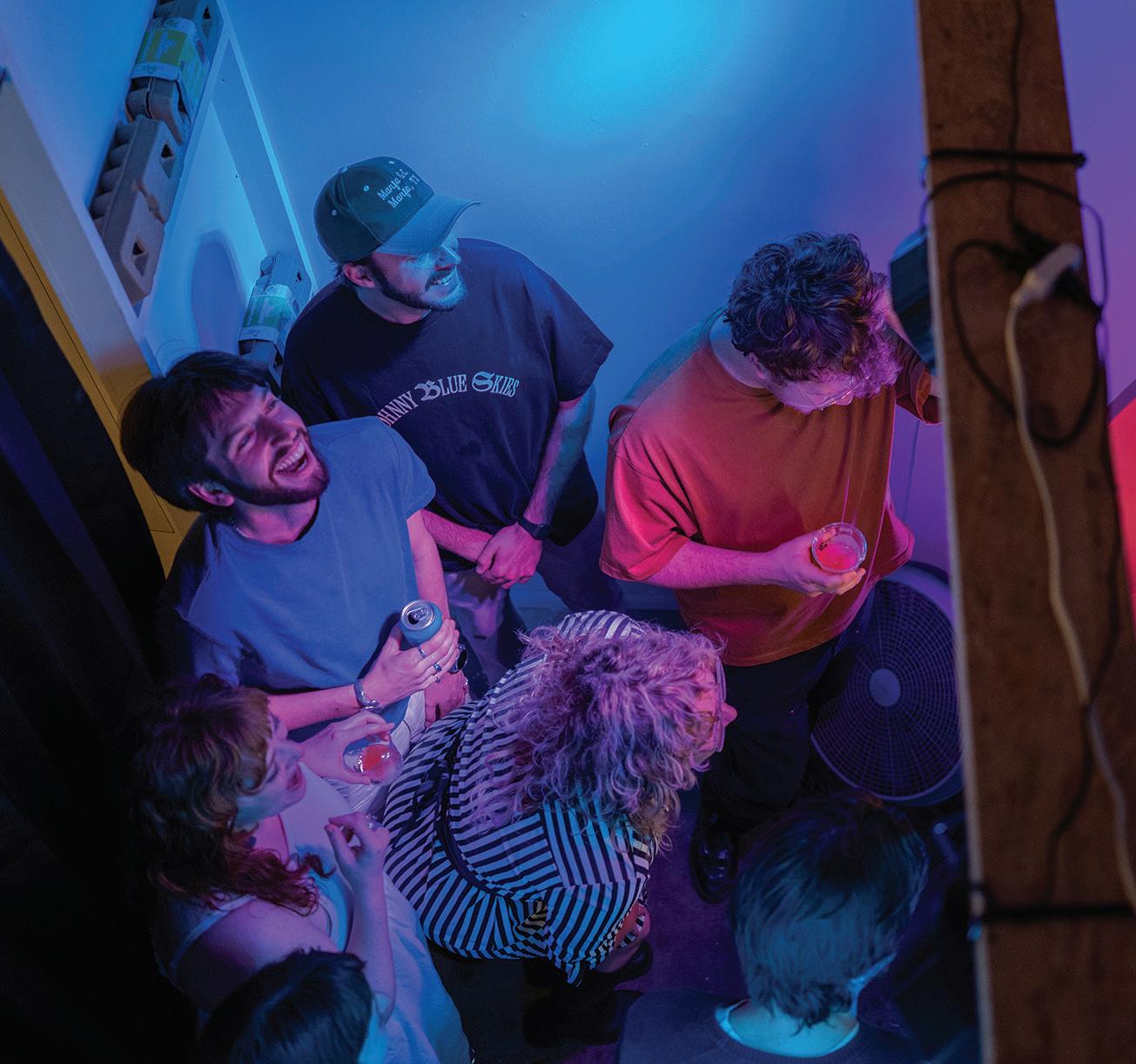
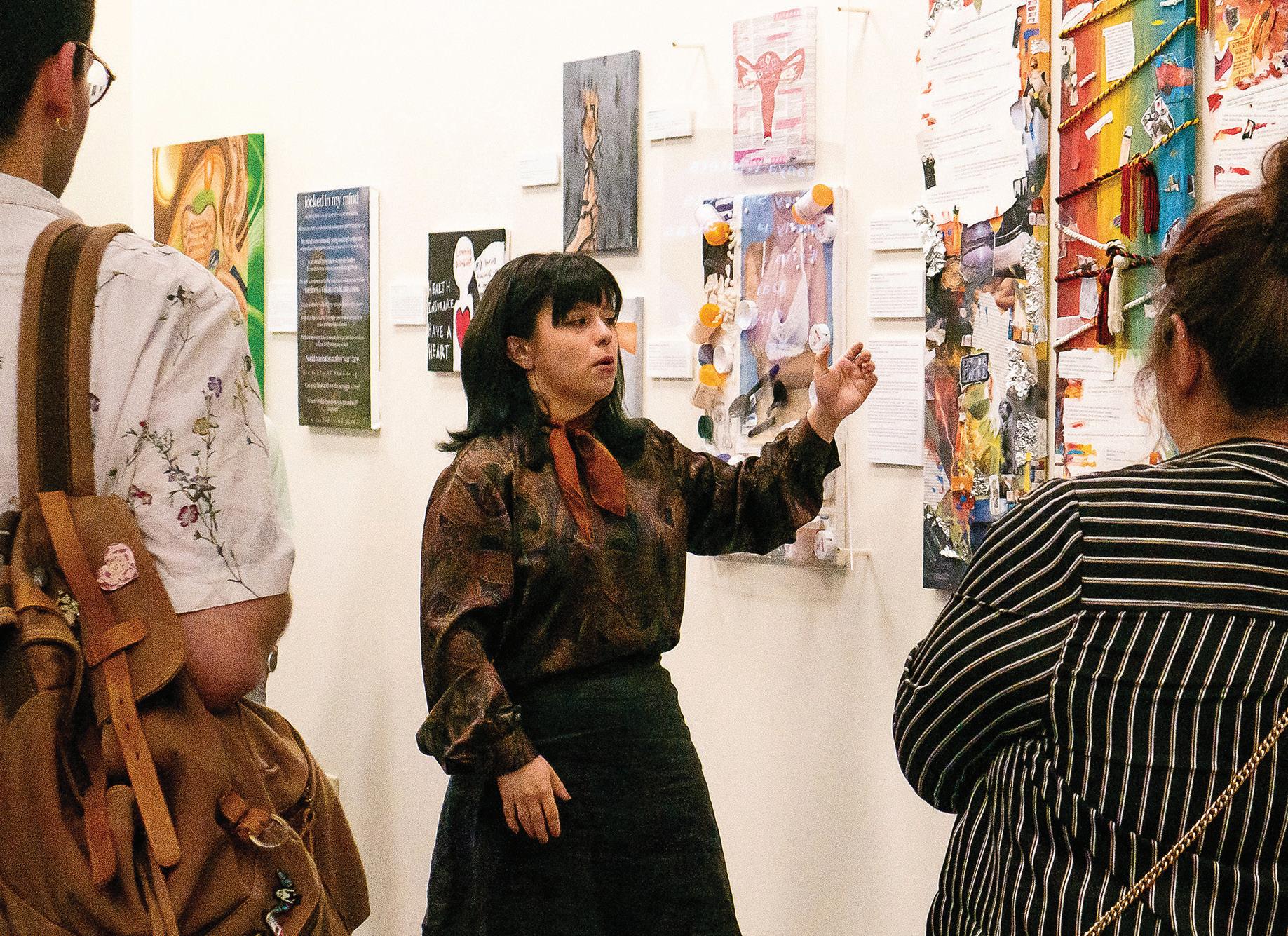
Texas State communication studies graduate
and
Thursday, April 3,
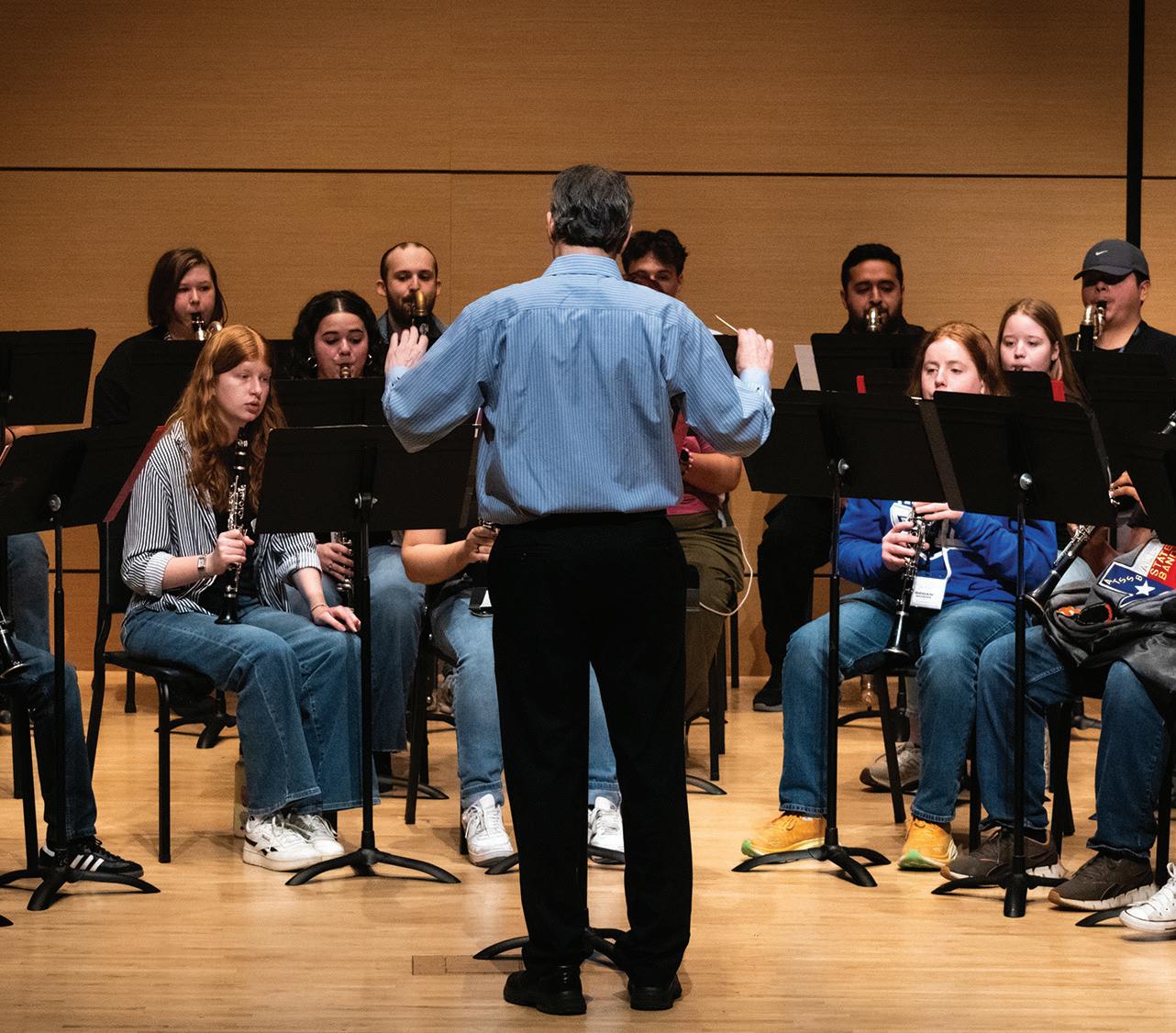
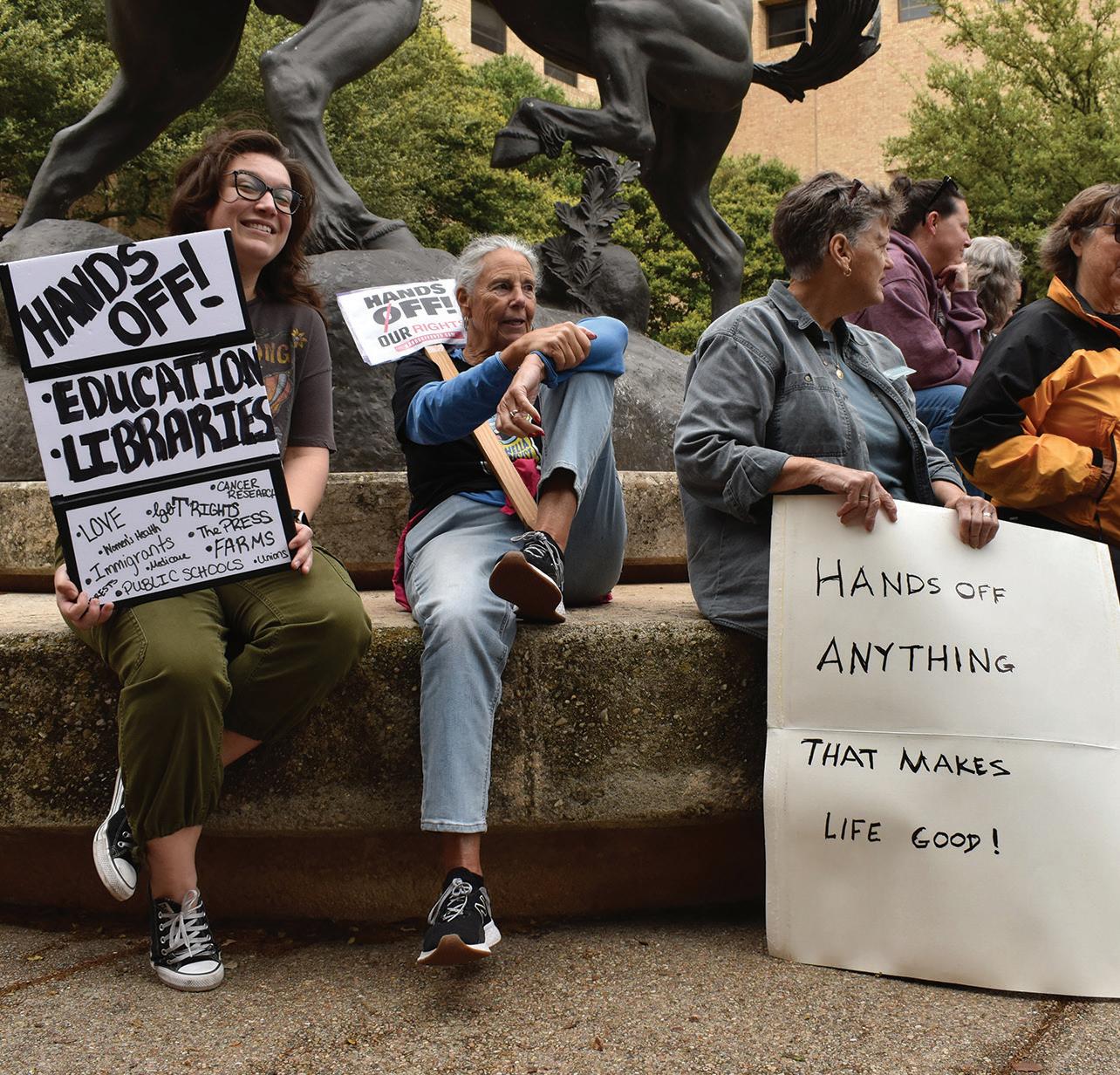
Mitchell Estrin conducts Texas State musicians during a rehearsal for the Clarinet Fiesta, Saturday, April 5, 2025, at the Performing Arts Center. Texas State’s Clarinet Fiesta is a celebration of the clarinet featuring master classes and concerts.
Local Residents participate in the nation wide Hands Off protests, Saturday, April 5, 2025, at the Fighting Stallions. The Hands Off movement protests President Donald Trump’s policies.
Scan the QR code to view the gallery online.





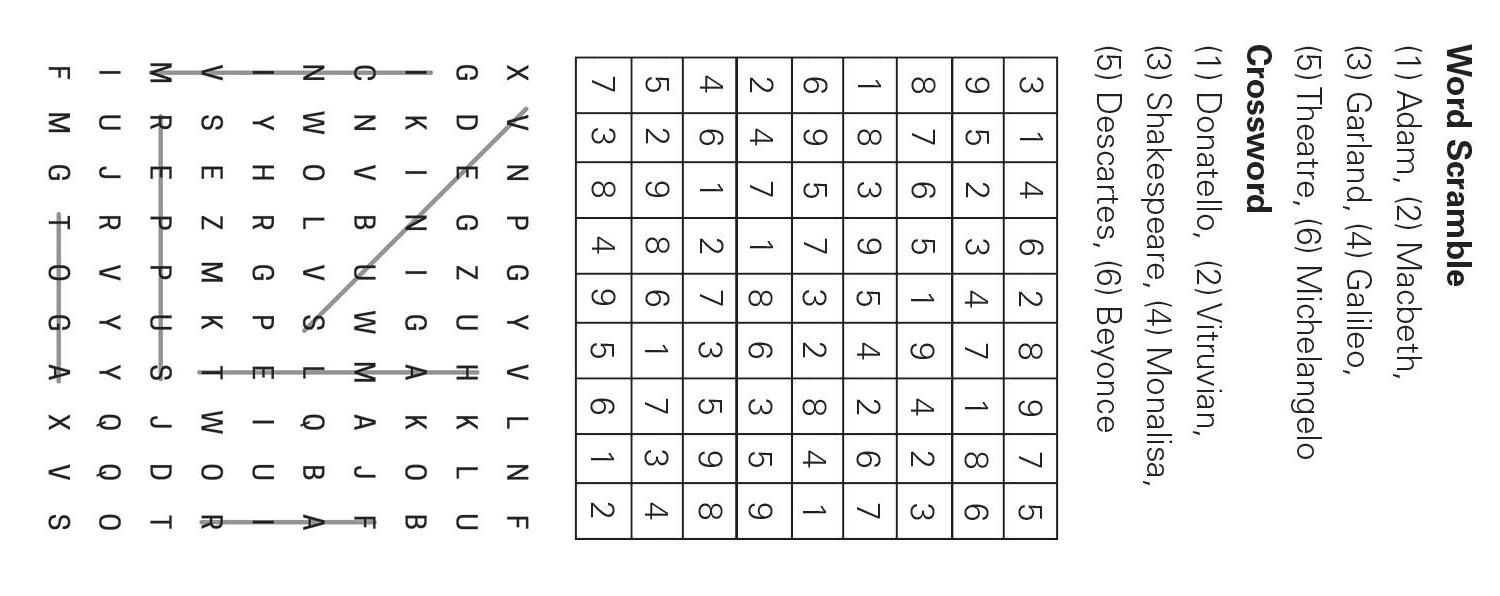

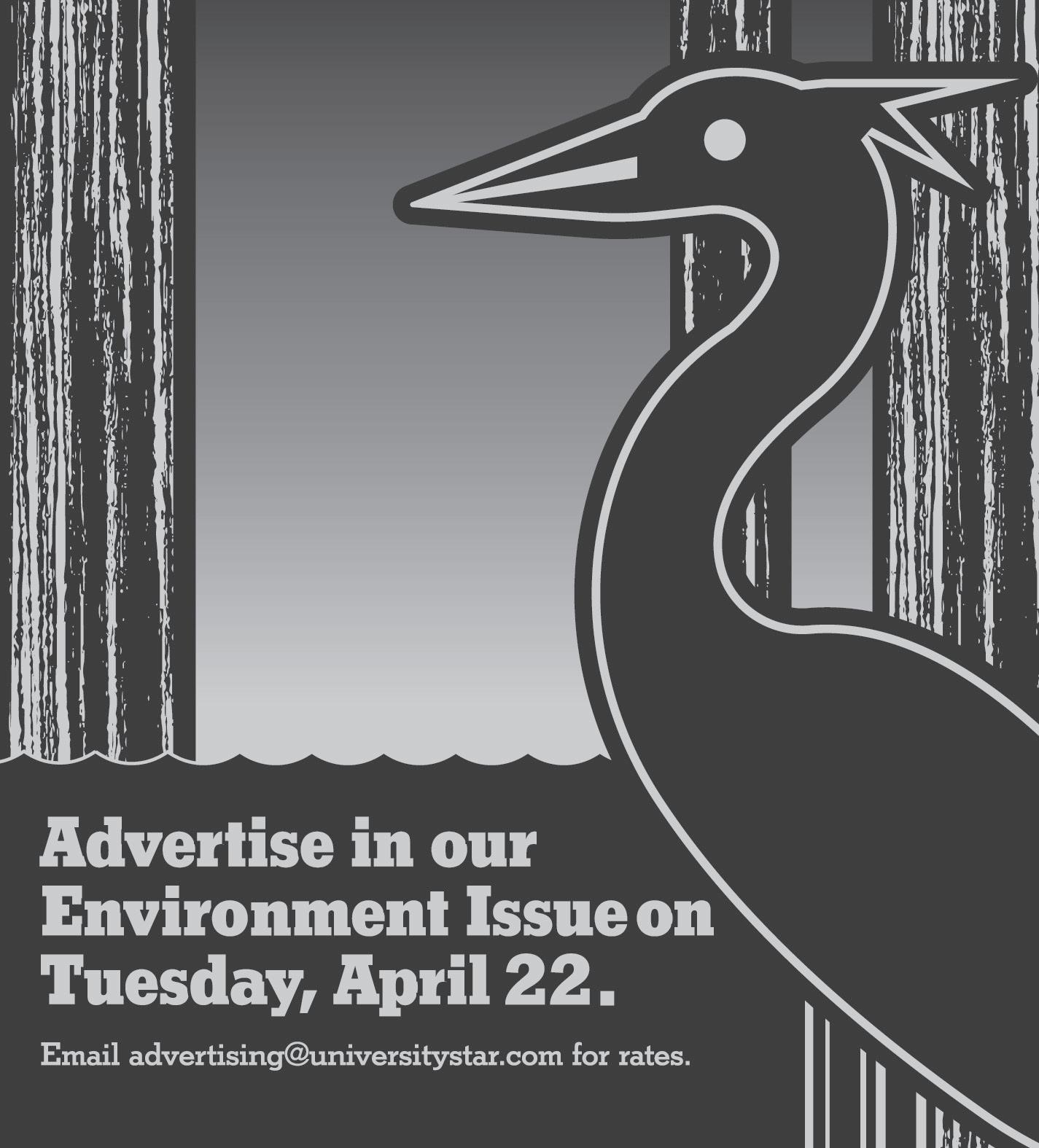


By Jackson Kruse Opinions Contributor
Imagine exiting your apartment and taking a walk to your car, and on the journey, you have to tip-toe around numerous piles of dog feces. Many Texas State students don’t have to imagine; they face the nightmare scenario daily.
People who don’t clean their dogs’ feces in apartment complexes are inconsiderate and cause an array of problems for other residents.
“[Dog feces] is not only unpleasant to look at, but it can also pose health risks,” Dorothy Pierre, a psychology junior, said.
The Environmental Protection Agency (EPA) labeled dog feces a pollutant that can harm humans, pets and the environment. Dog excrement can carry harmful parasites, transmit human diseases and pollute waterways.
Beyond the health risks, piles of dog waste everywhere cause people to be late for important obligations and have to clean their shoes vigorously.
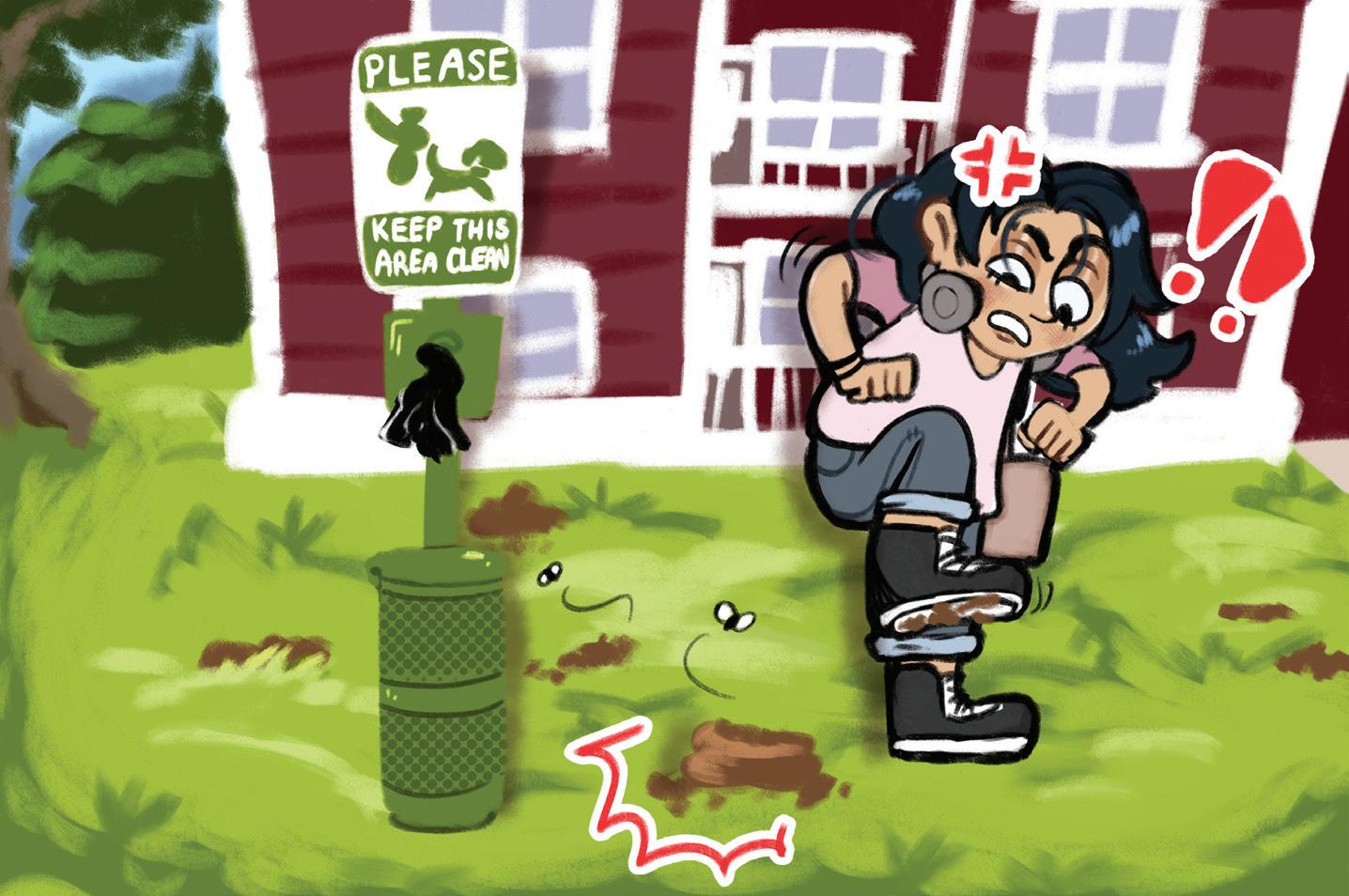
“It makes it really difficult to walk to my car because I have to walk through a lot of grass, and I always have to have a flashlight on at night to make sure I don’t step in a pile [of dog feces],” Sienna McCully, interior design sophomore and Cabana Beach resident, said.
No one should have to actively avoid dog excrement in the apartment complex they reside in, especially when it’s a minuscule task for people to clean up after their dogs.
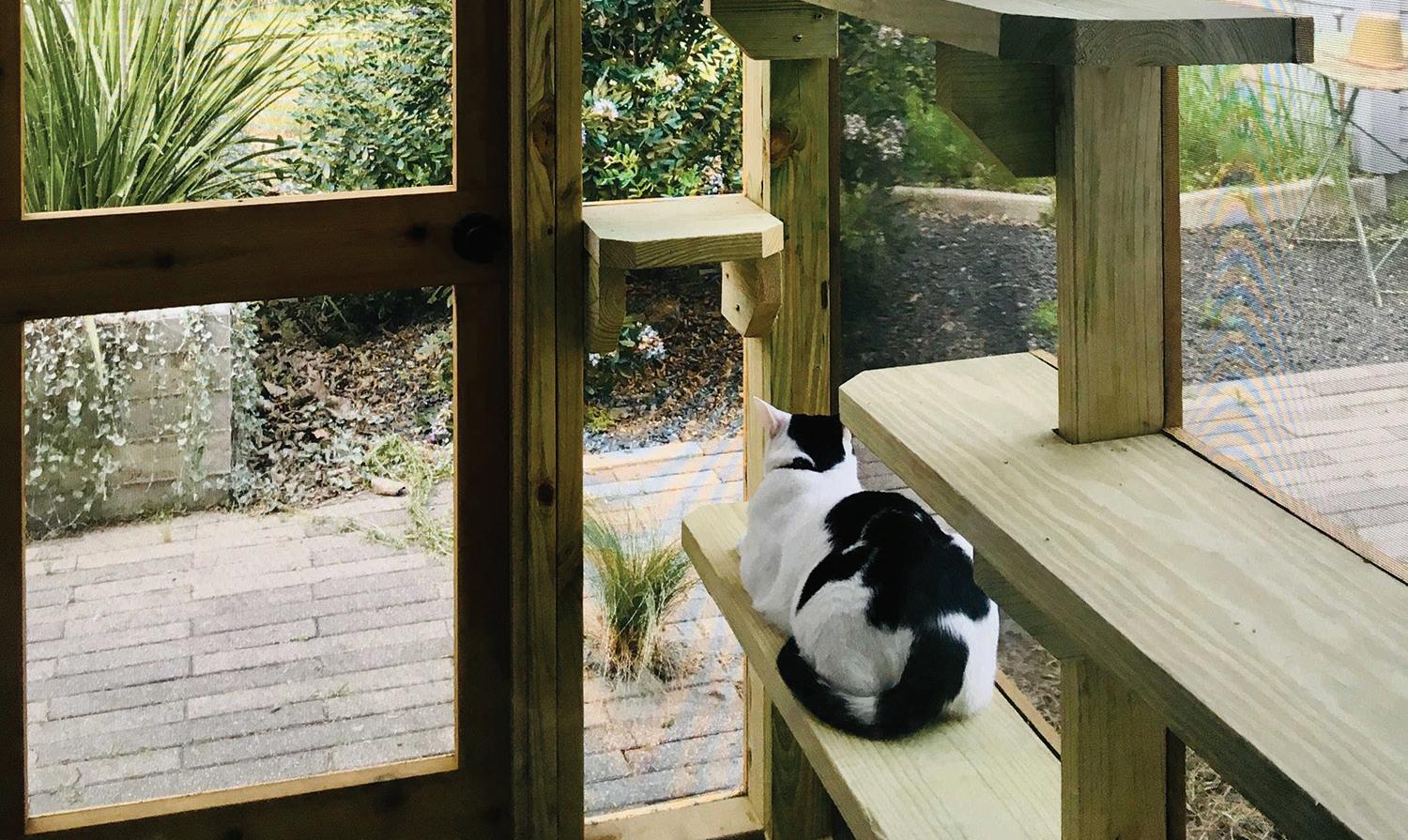
“[To tackle this issue], I think we should implement tougher fines and make sure there are plenty of designated dog areas with bag stations,”
Pierre said. “Also, a bit more awareness and reminders from management could be really helpful.”
everywhere accountable by enforcing fines. The problem is these apartment complex workers are underpaid, leading to many of them not caring. This issue wouldn’t be as apparent if apartment complex workers were given fair wages.
Many residents at Oasis at Plum Creek in Kyle don’t clean up after their dogs, yet no fines are enforced, and the designated dog bag spots are frequently empty.
While this issue negatively affects residents, it also hurts the complex’s business.
“If other future residents come [and see dog feces everywhere], it’s not an appealing thing,” Kayla Reyes, a Cabana Beach employee, said.
The only somewhat reasonable argument for leaving dog excrement in a residential area is that picking it up is “gross.” Well, stepping in it is more gross, and people should only have dogs if they are willing to clean up after them. No one is forcing you to have a pet, but if you do, make sure you’re doing your part.
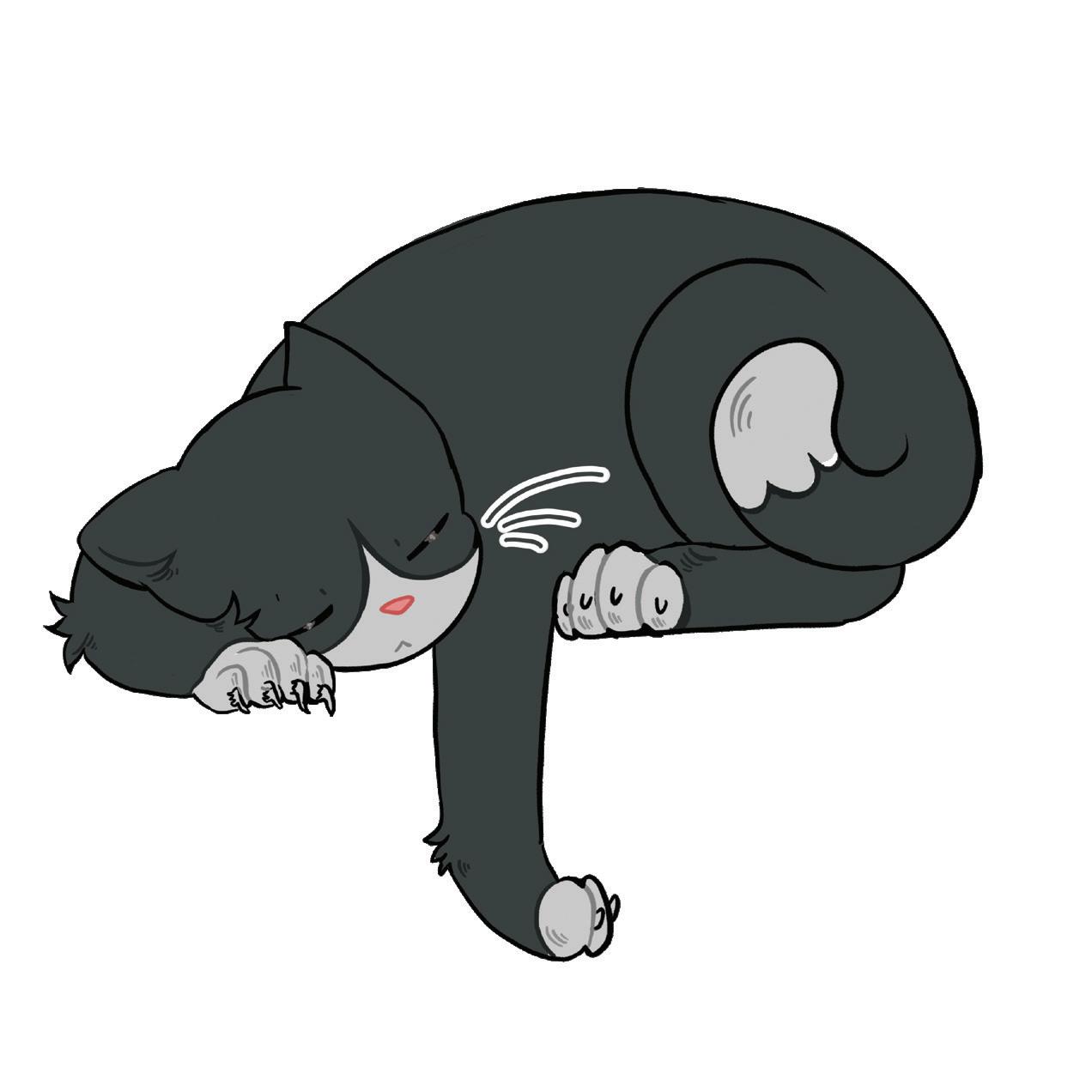
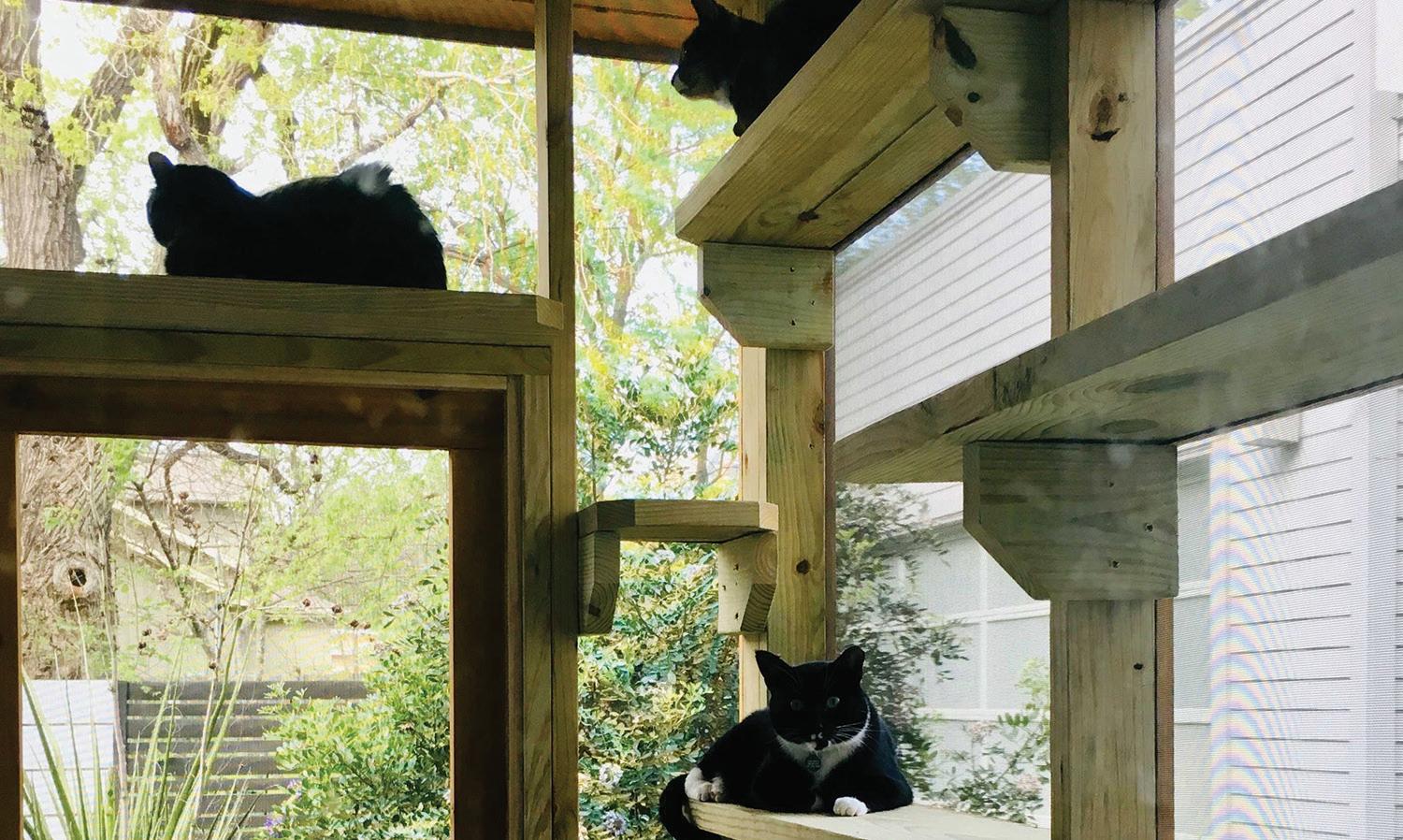
Coleman said while climate change and other human-related issues affect bird populations, cats have an especially harmful impact on them. He said native rodents and bird species, such as the field mouse and the endangered golden-cheeked warbler, face serious threats from apex cat predators. for sport,”
Coleman said. “It’s not [always] to eat... they are natural predators and their form of enrichment is hunting. If you’ve ever played with the cat, you’ve seen them go through the hunting
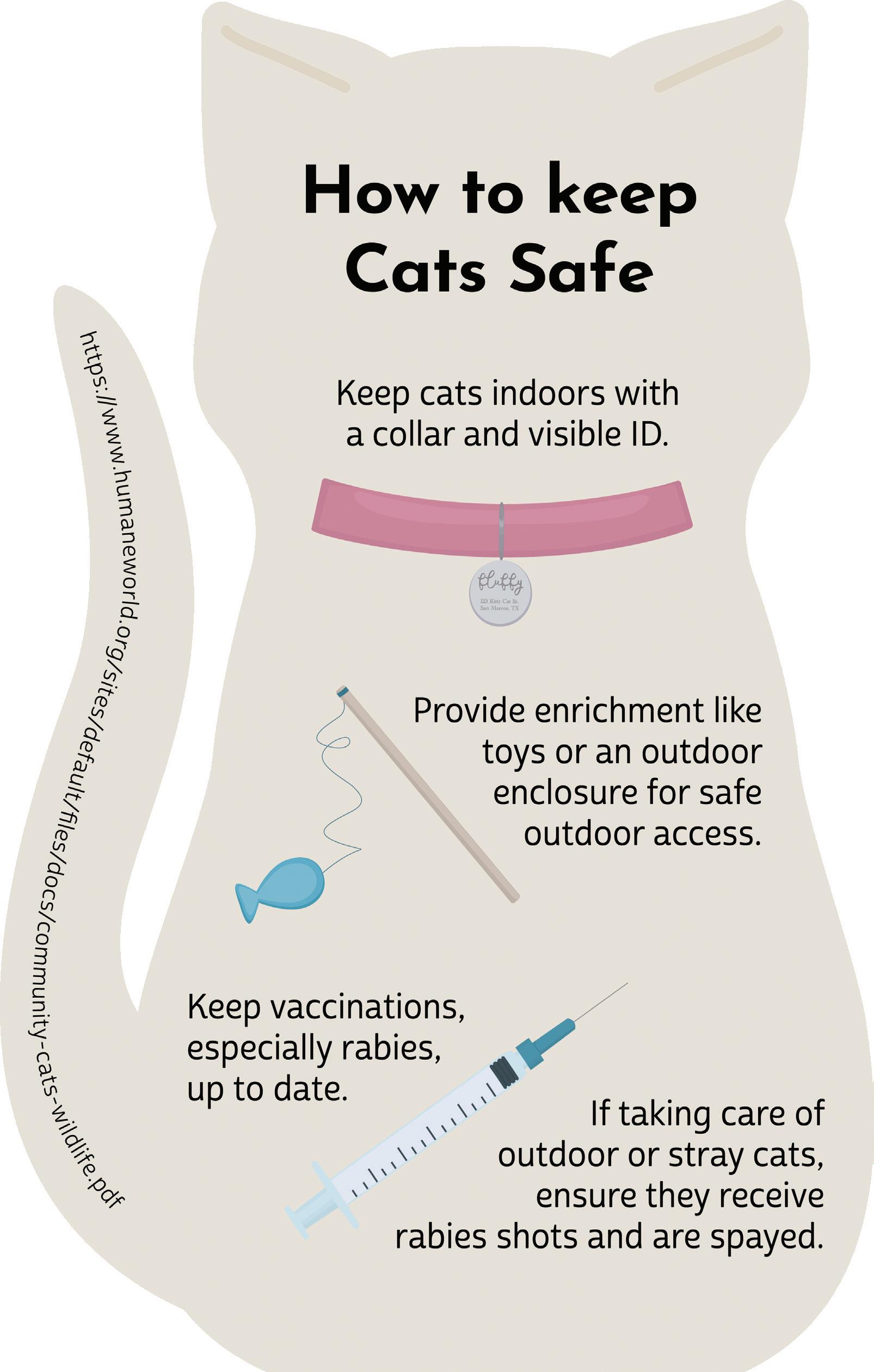
Many communities across Texas, including the cities of San Marcos, Austin and San Antonio, use Trap-Neuter-Return (TNR) programs to manage community cat population. TNR involves trapping feral cats, spaying or neutering them and then returning them to their original location.
Wendy Weiss, an Austin Community Cat Program volunteer, said TNR programs, such as the Austin Community Cat Program, have a legitimate plan for managing community cat populations.
“The thought [behind TNR is that] cats are very territorial, so if you have a group of them in a space and you stay neuter them so they don’t reproduce... they keep other cats from moving in kind of on their territory,” Weiss said.
However, many bird conservation groups oppose TNR programs. The American Bird Conservancy’s solutions page calls TNR ‘ineffective’ and argues the method fails to reduce cat populations or protect wildlife.
“You can’t trap all the strays and ferals at a rate sufficient enough to eliminate the stray and feral population... So it doesn’t solve the stray and feral population by driving it to zero, just simply slows the rate of reproductive growth,”
Coleman said.
Coleman argues that municipal governments should seriously consider euthanasia for community cat populations, despite objections from cat lovers. He, a former cat owner, believes it is a necessary step to protect local wildlife.
“TNR is not the preferred method of managing strays and ferals, and some people think that it’s cruel to consider euthanizing feral cats, but the truth is they have a very horrible
life... [subject] to disease, parasites, worms, rabies and the list goes on,” Coleman said.
Weiss said she strongly disagrees with the notion that euthanasia is necessary to manage community cat populations.
“[Cats] are apex predators and they are meat eaters, and I don’t think they deserve to be rounded up and killed because of who they are and the fact that they have really just been abandoned by people,” Weiss said.
One thing Coleman and Weiss both agreed on is the importance of cat owners keeping their cats indoors.
Robert Mace, director of the Meadows Center and owner of several cats, said indoor cats are significantly healthier than their outdoor counterparts.
“Cats that live indoors tend to live a lot longer than cats that are outside, just exposure to disease, [getting] in the fights with other cats, getting eaten by coyotes, getting run over by vehicles, there’s a lot of dangers out there,” Mace said.
Mace recommends giving indoor cats the experience of the outdoors with a catio, an enclosed outdoor space that lets them safely enjoy nature.
“[Catios] can be small,” Mace said. “They attach to a window, almost like an like a window AC unit, with a doorway that goes in and out that allows the cat to go outside, and then it’s screened in to keep the cat from getting loose.”
Students, many of whom do not have the money or space for a catio, can still provide outdoor enrichment for their cats as well, according to Mace.
“If you don’t have an outdoor patio, then having a window space with [a] place to sit that they can look outside and see what’s happening [is good], cracking the window open a little bit so they can smell things... You could also train a cat to wear a harness and then take it outside,” Mace said.
“Section 504 does not apply to either [service animals or ESAs],” Steiger said. “The ADA is the law that provides guidance on service animals. The emotional support animals are governed under Housing and Urban Development and the FHA.”
That means students living on campus with ESAs are protected under housing law, not Section 504.
“Because we offer residential facilities, we are therefore bound by the Fair Housing Act,” Steiger said. “We have to ensure that the residential facilities that we offer are also available to students with disabilities.”
Service animals, on the other hand, are regulated under the ADA and defined as dogs trained to perform specific tasks for individuals with disabilities.
“The keywords here are ‘dog’ and ‘trained,’” Steiger said. “The emotional support animal does not necessarily have to be a dog, and it does not have to be trained.”
Steiger also said the registration processes for service animals and ESAs differ. While students do not need to register service animals with ODS, those seeking approval for an ESA must go through a verification process that includes documentation from a healthcare provider with knowledge of the student’s condition.
“We’re looking for someone who’s able to actually sit down and talk with the individual,” Steiger said.
More than 3,000 students are registered with ODS, Steiger said, though the number of students with assistance animals is not publicly tracked.
Some students worry that the outcome of Texas v. Becerra could threaten their access to assistance animals.
Avery Donnelly, animal science freshman, registered her ESA, a cat named Pumpkin, through ODS.
“I’m disappointed in the [lawsuit] as somebody with an emotional support animal,” Donnelly said. “I hope they know how this is [going] to affect students’ rights.”
Donnelly said the process of registering Pumpkin was stressful but worth it.
“I know a lot of incoming freshmen are going to have to fight for their animals [if Section 504 is deemed unconstitutional], like what’s the problem? It’s a cat just sitting there,” Donnelly said.
Jay Bauer, accounting sophomore, who has an ESA that is a cat named Belle, echoed the sentiment.
“You can’t be sad when you have a little child to take care of,” Bauer said. “My friends often come to my room to just sit with Belle.”
“If the [city council] chooses the northside... they would need to relocate to existing city land or would need to purchase new land... for the dog park and the skate park,” Parker said.
However, residents and the communities surrounding the dog park and skate park have voiced opposition to the loss of recreational space and the negative impacts on local families and park regulars.
Makena Ford, who often frequents the dog park, said it is essential to dog owners and their pets to connect.
“Me and my dog come here every day for about an hour to two hours... it’s essential for my dog to have space to run and play,” Ford said. “We actually have dog parties. We all come together, get the dog a birthday cake Dillon Riepe, marketing sophomore, and Paige Walton, animal science sophomore, have cultivated a routine

FROM FRONT COMMUNITY
with their dog Sage. The dog park’s availability and distance to Texas State make it easier to juggle school, life and being pet owners.
“Everybody’s made friends here and if they take that apart, they’re not just tearing it apart for our dogs, they’re tearing it apart for our community,” Walton said.
Parker said if the committee and city council decide to relocate the dog park, it would be an opportunity to have improved amenities for the public.
“I do feel very hopeful that the dog park and the skate park will be properly handled because even before we heard anything concerning from the public, it has been a major conversation between the committee,” Parker said. “It’s very clearly known and understood that those two amenities need to be addressed.”
While San Marcos resident Isaac Salais considers the positive impact a potential new park could have on the community, he questions the steering committee’s plan.
“I would love to see better amenities. We don’t have a lot of water fountains that work, and they have another one that’s been broken for God knows how long,” Salais said.
DDO allows anyone with a valid government ID to take a shelter dog out for the day, giving the animals a much-needed break from the shelter environment. Not only does this help reduce the dog’s stress and improve their socialization, but also increases their visibility in the community, giving them a greater chance at becoming adopted.
Volunteers can take the dogs, each wearing a bandana that says “adopt me” with a QR code linking to their description, to parks, rivers, pet-friendly businesses or even the volunteer’s home for a relaxed day. The quick 10-question application ensures each dog is paired with the perfect outing, whether they’re in need of adventure or some extra cuddles.
Ella Maedgen, psychology senior, signed up to participate in DDO after hearing about it from friends. Being away from home and her family pets, she wanted a furry companion but understood that the time and responsibility of having a pet while at school wasn’t something she was ready for yet.
“I’m excited to take out my first dog, and I’m sure I won’t just stop after that,” Maedgen said. “I think I’ll benefit from it just as much as the dogs will.”
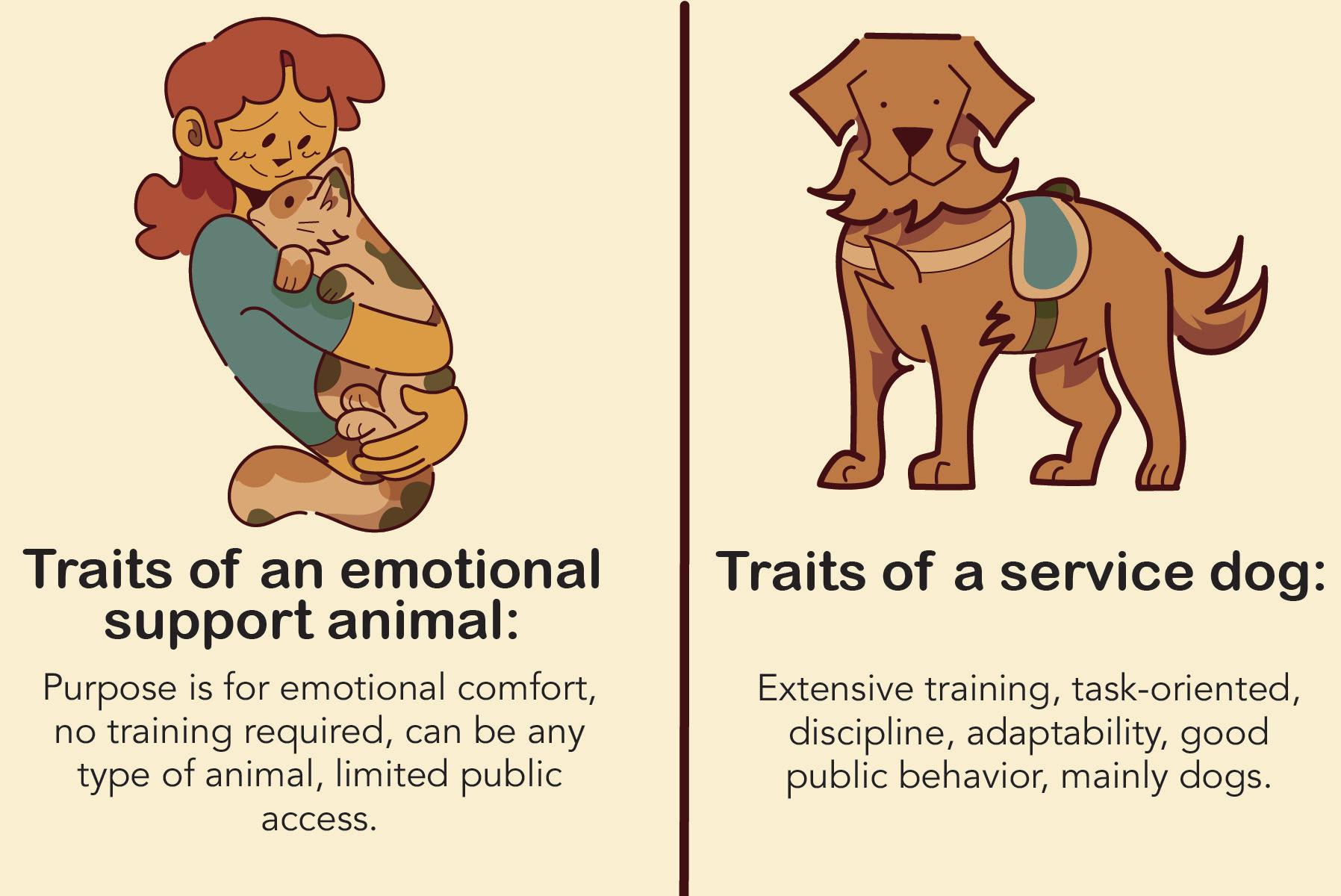

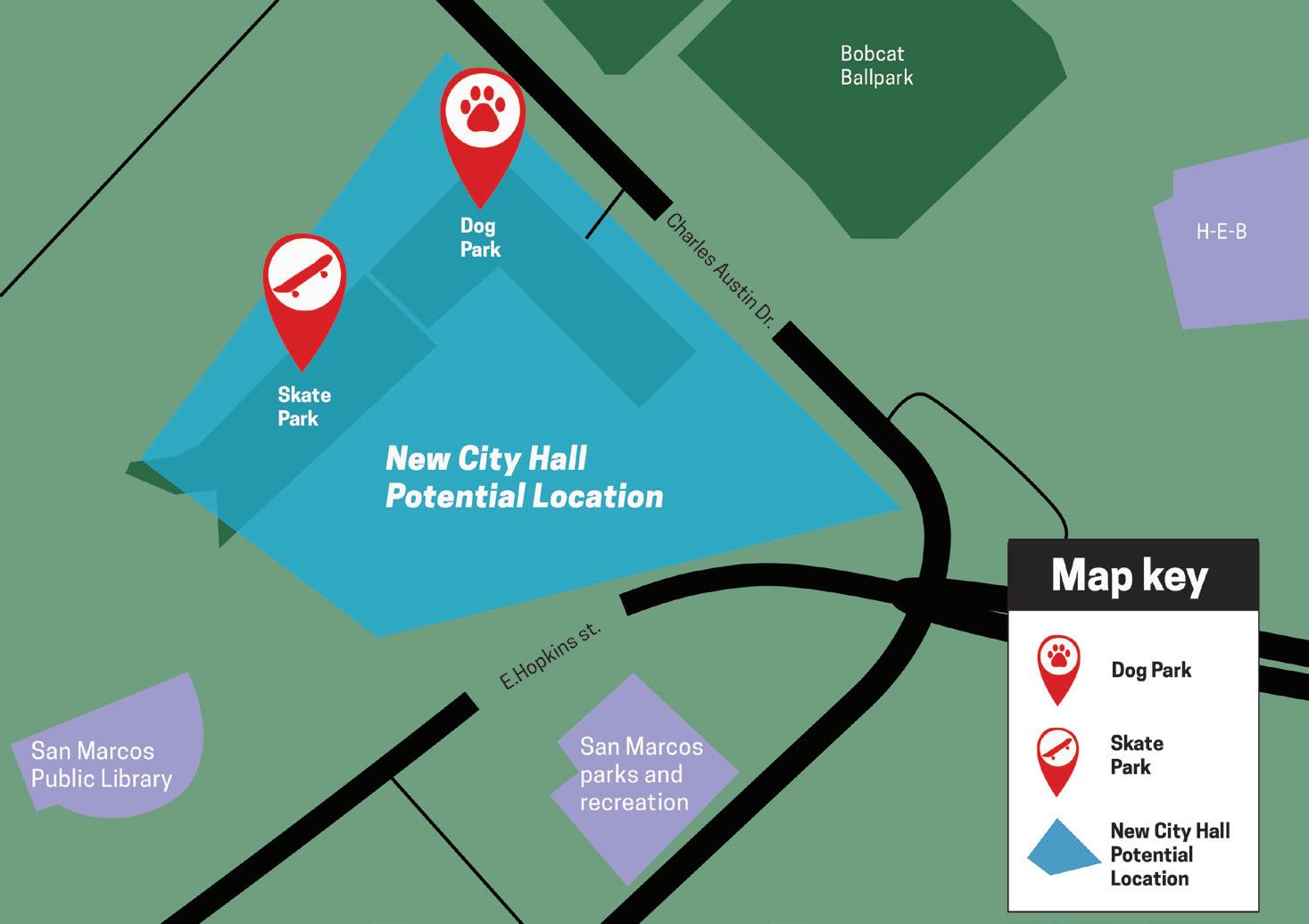
“I’m not saying [the dog park] can’t be improved, but maybe a relocation could be good.”
San Marcos Councilmember Amanda Rodriguez wrote while she’s not in the city hall steering committee, she supports leaving the parks as is and looks forward to working with the committee, staff and colleagues to determine the best option.
“I want to assure the community that I support any effort to keep the City Hall located on the land it currently occupies, if feasible.
The program also introduced group participation, allowing volunteers to take out more than one dog at a time if they are compatible. Two of Texas State’s fraternities and sororities, Beta Upsilon Chi (BYX) and Delta Zeta, took advantage of the new changes by incorporating them into their philanthropy efforts. They hosted an event on March 22 that gave 13 dogs a day of walks and outdoor time.
Sebastian Alvara, BYX secretary, said the most rewarding part of the experience was working alongside 40 volunteers to shower the animals with love and attention. He added the positive feedback from the volunteers made the experience especially fulfilling.
“Everyone loved being a part of something that made the dogs so happy,” Alvara said. “And it was really encouraging to see how much people cared.”
The next initiative the shelter hopes to introduce is all-day events, where people can stop by and choose a dog to take out for the entire day, providing the dogs with even more time outside of the shelter.
Protecting the beloved amenities, like the skatepark and the dog park, is a significant priority for me, as residents have made it clear they desire these spaces to remain intact,” Rodriguez wrote in a statement to The Star Further discussion will be held during the San Marcos City Council work session at 3 p.m. on April 15. Residents are welcome to share their thoughts during the Citizen Comments portion at the beginning of the meeting.




